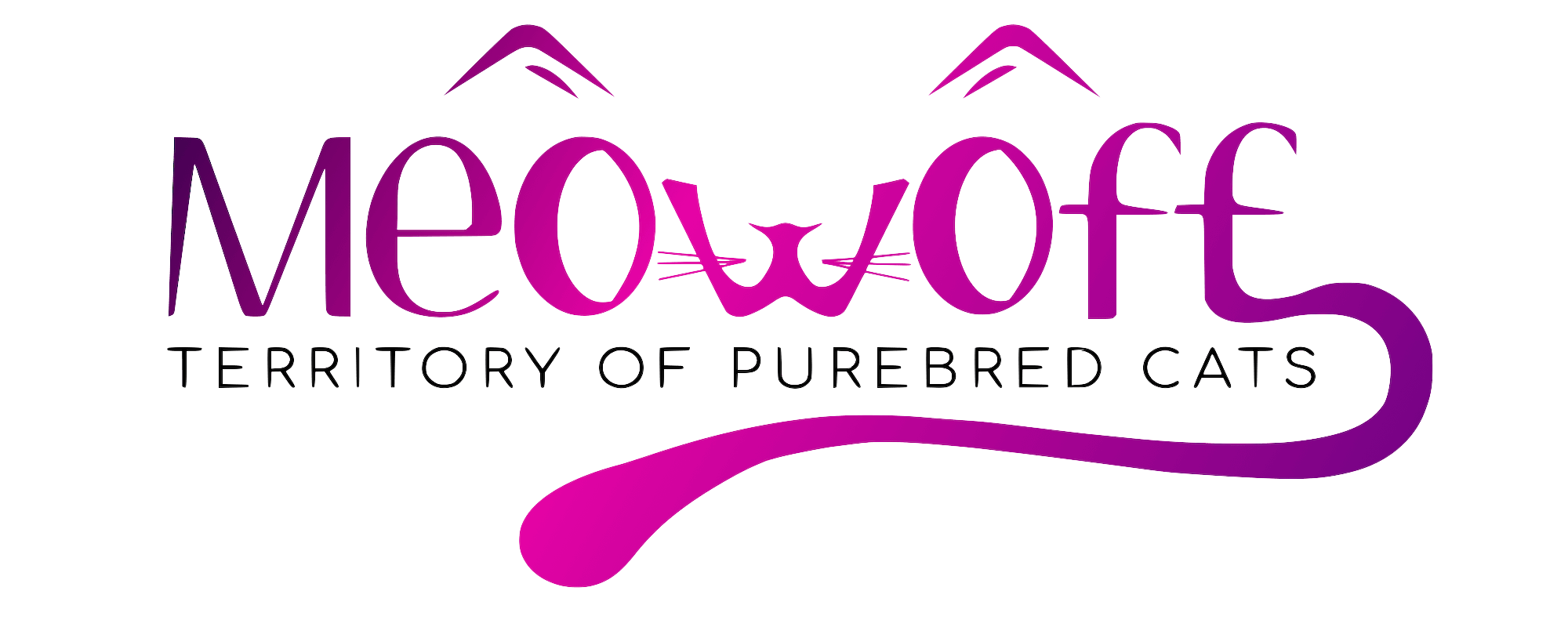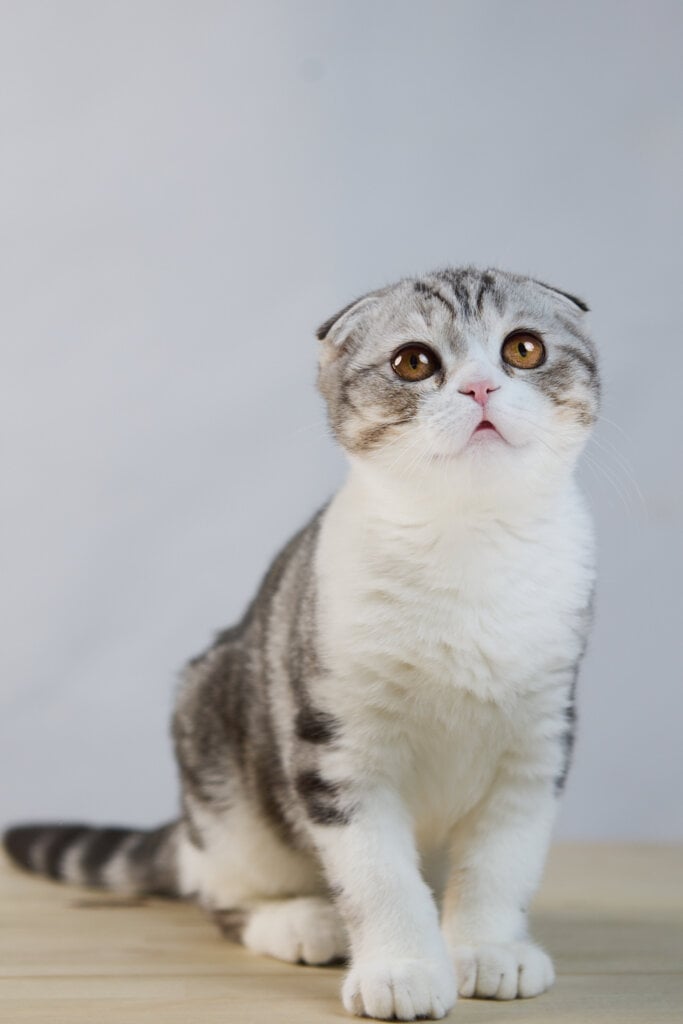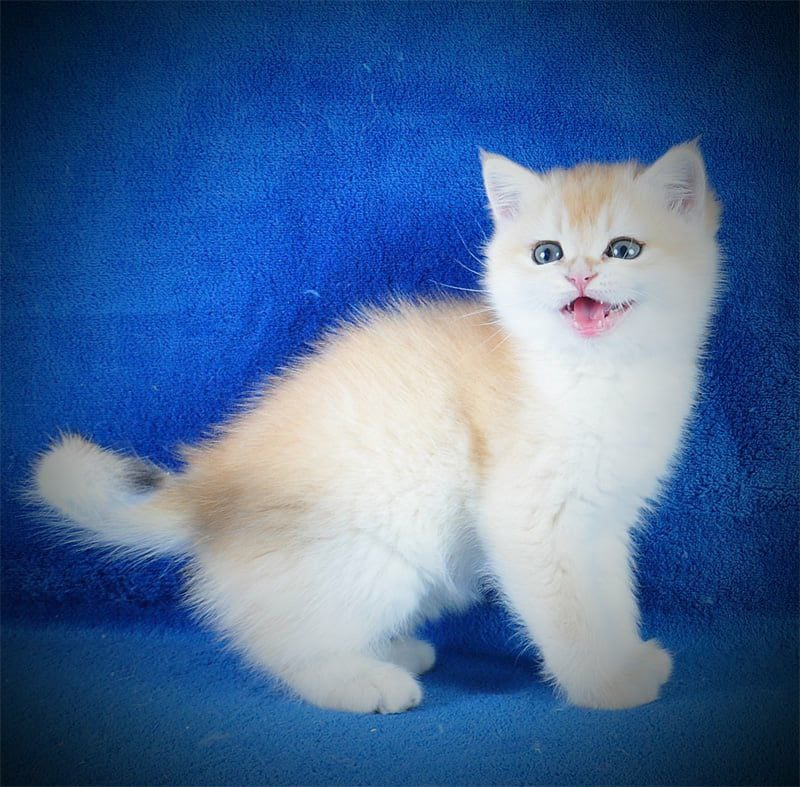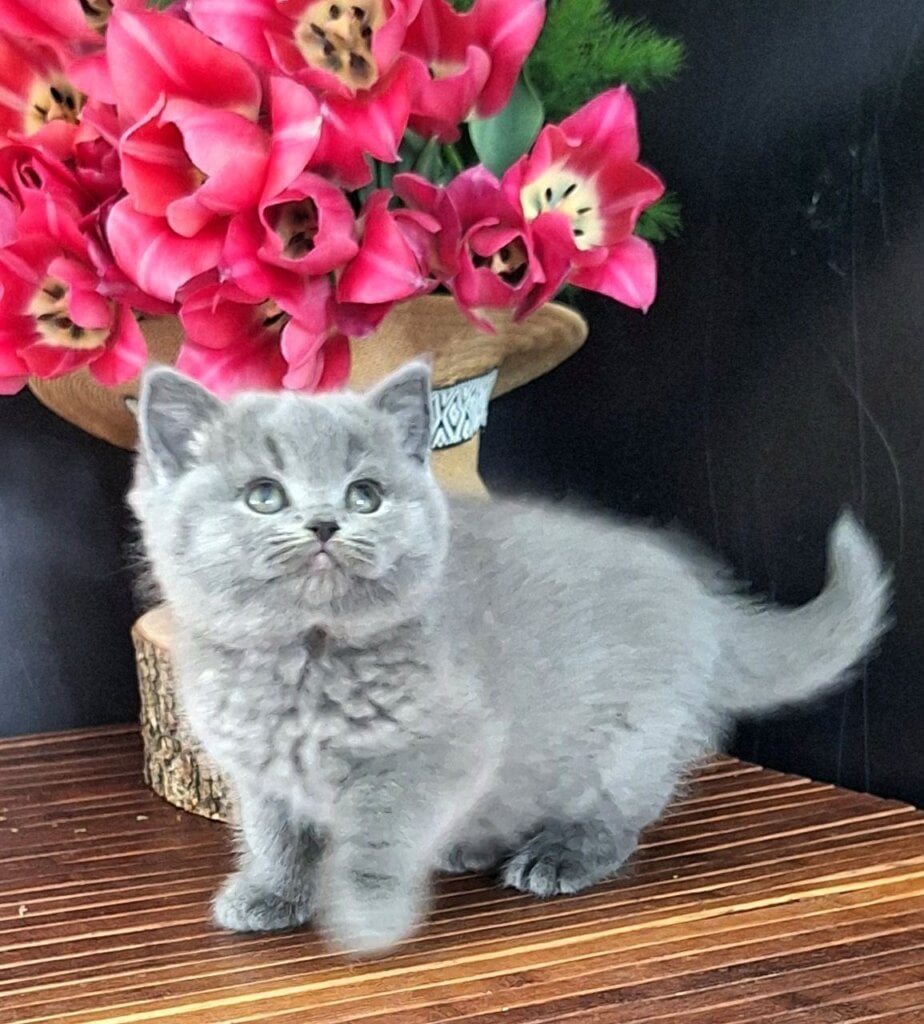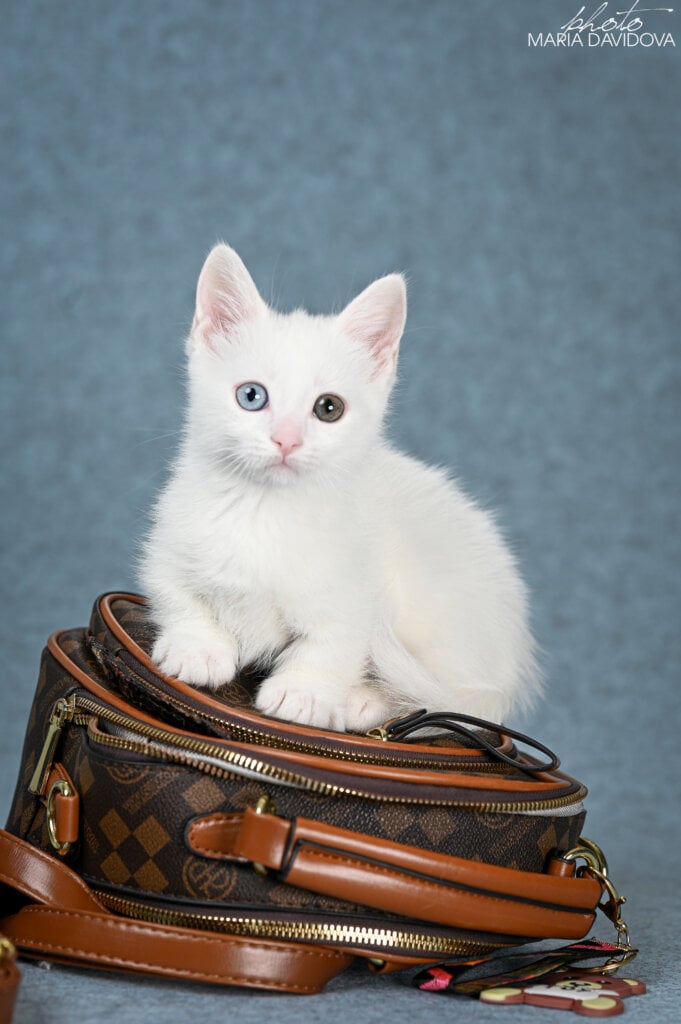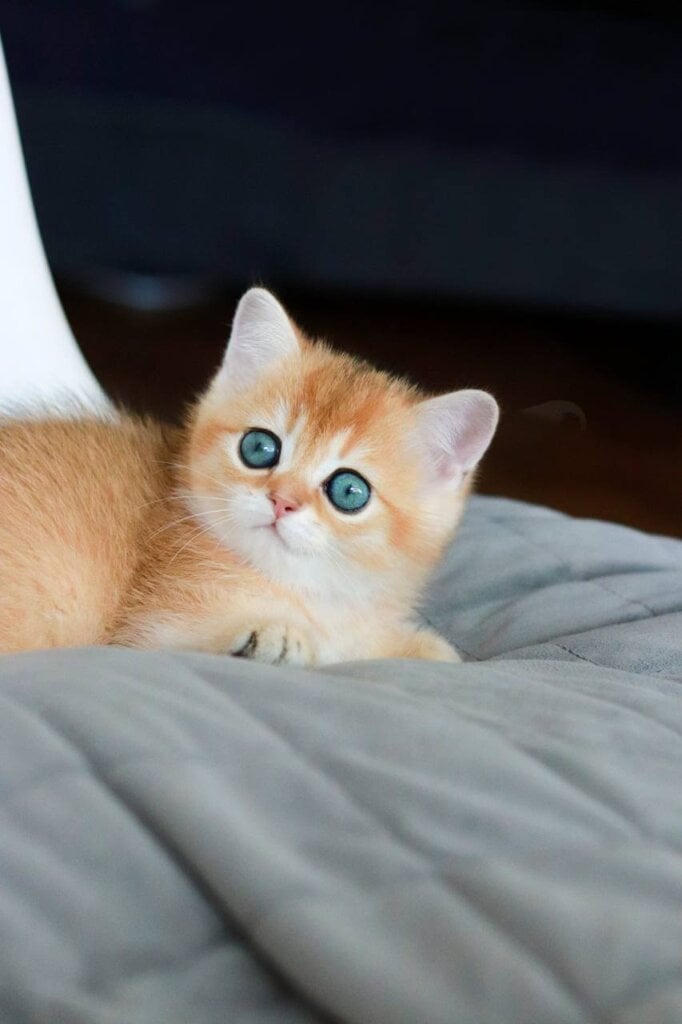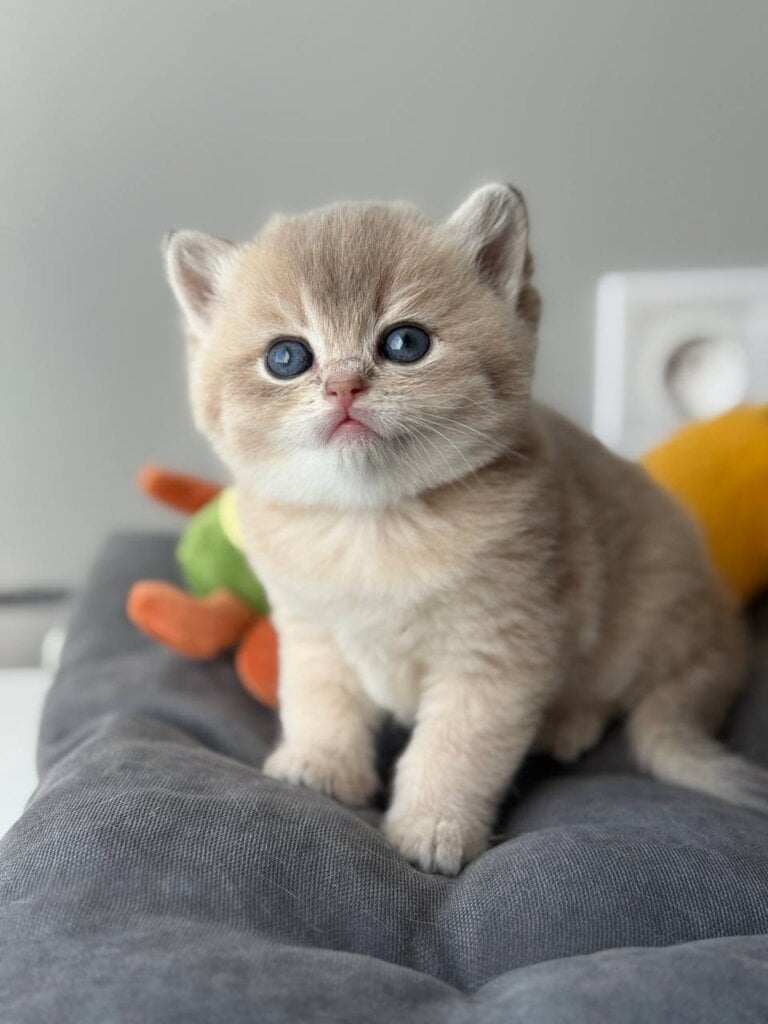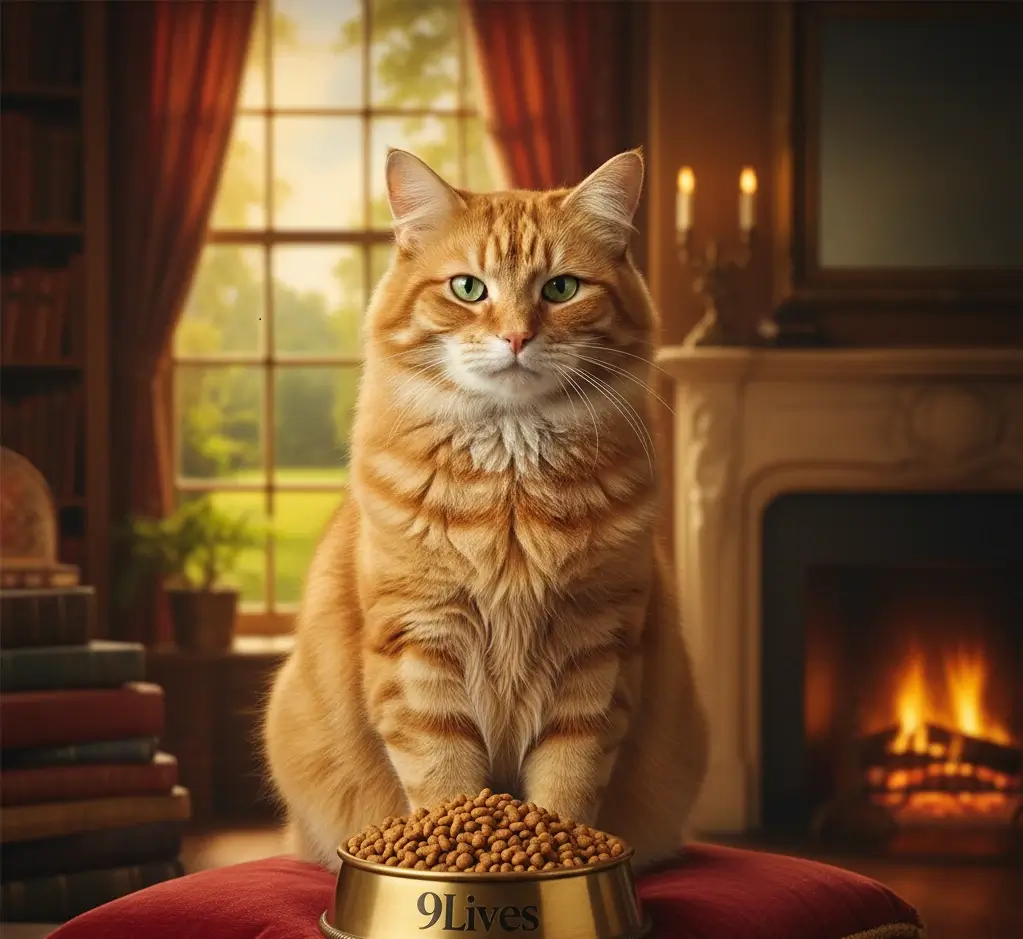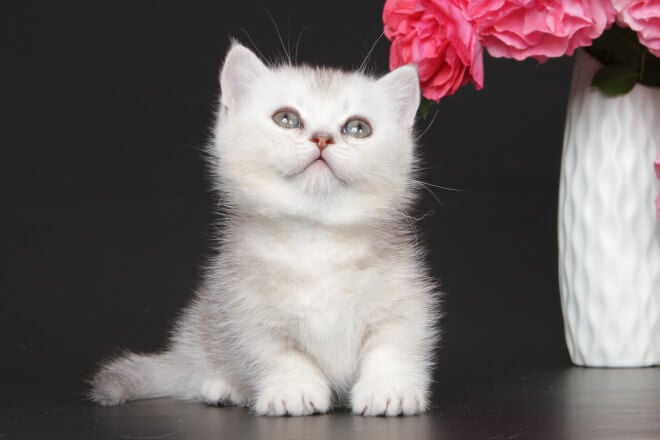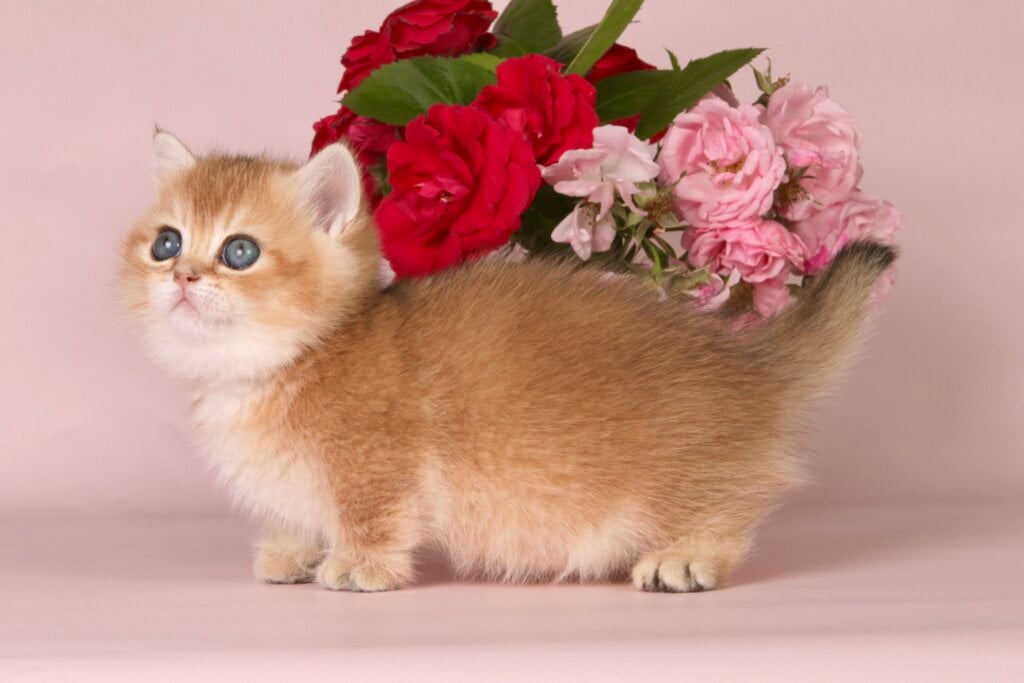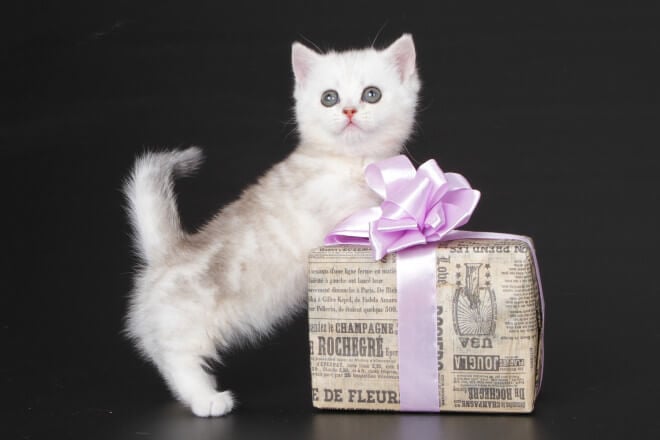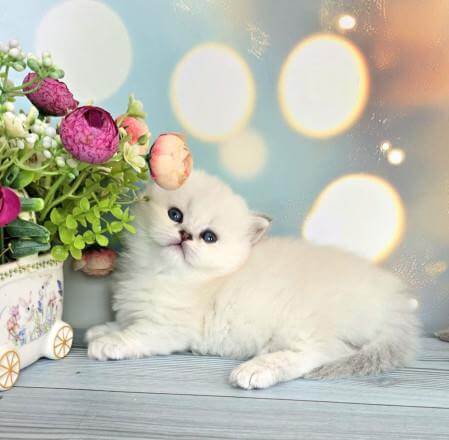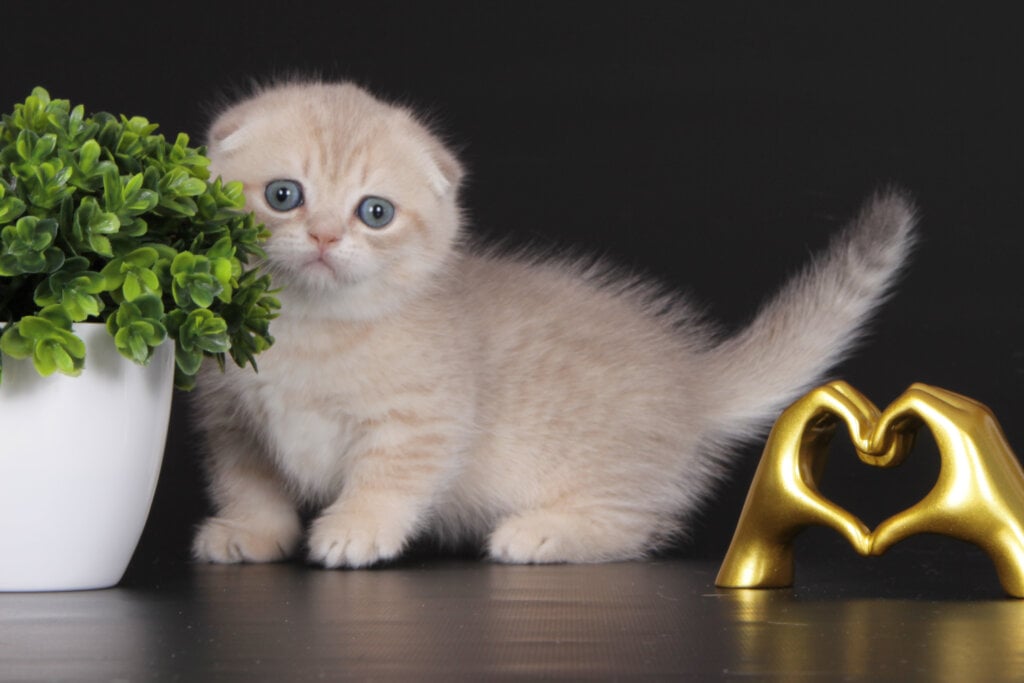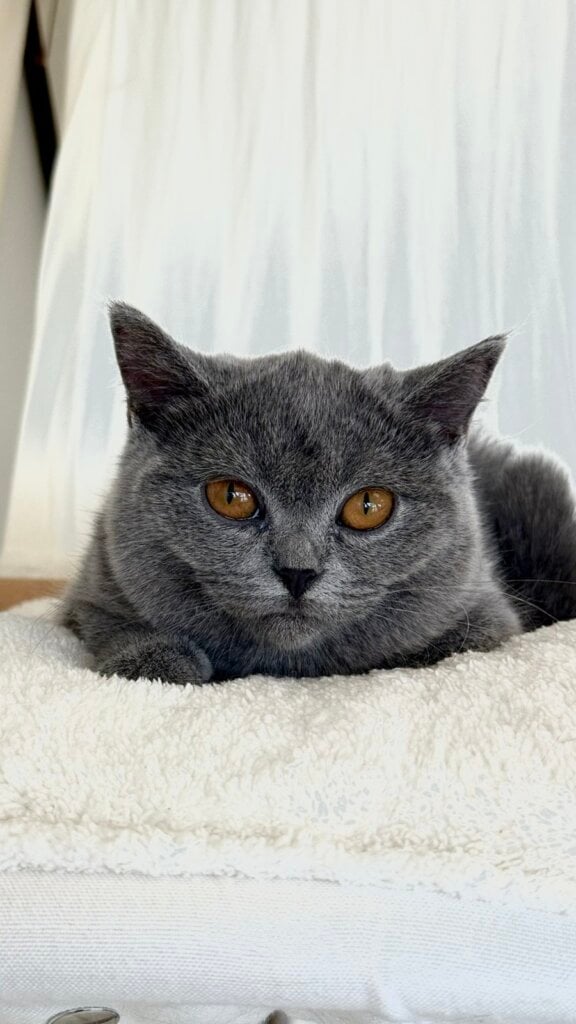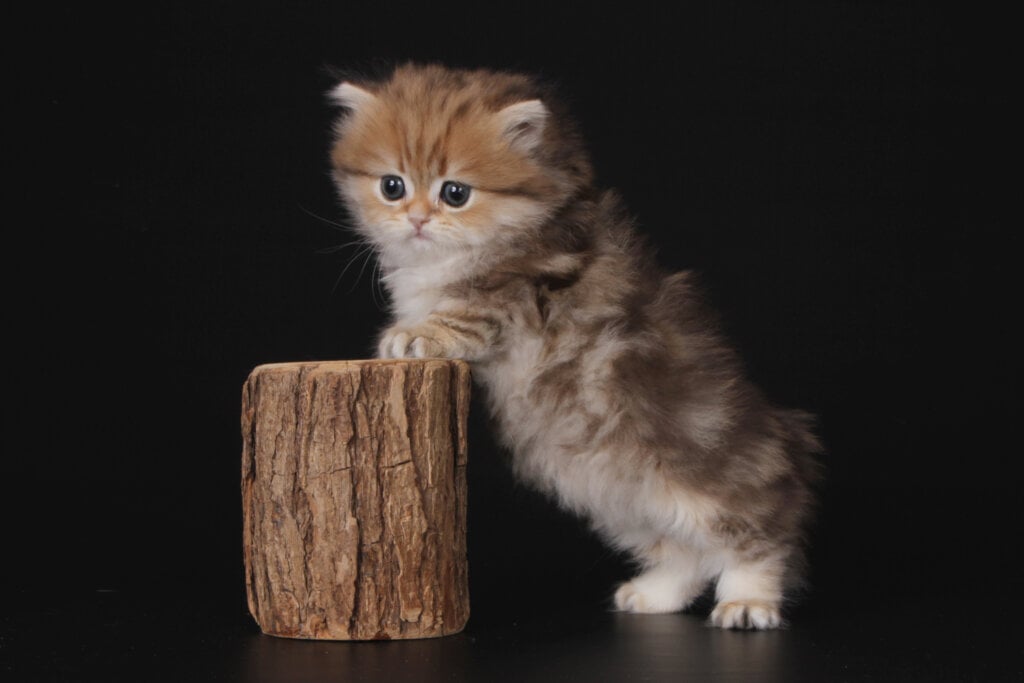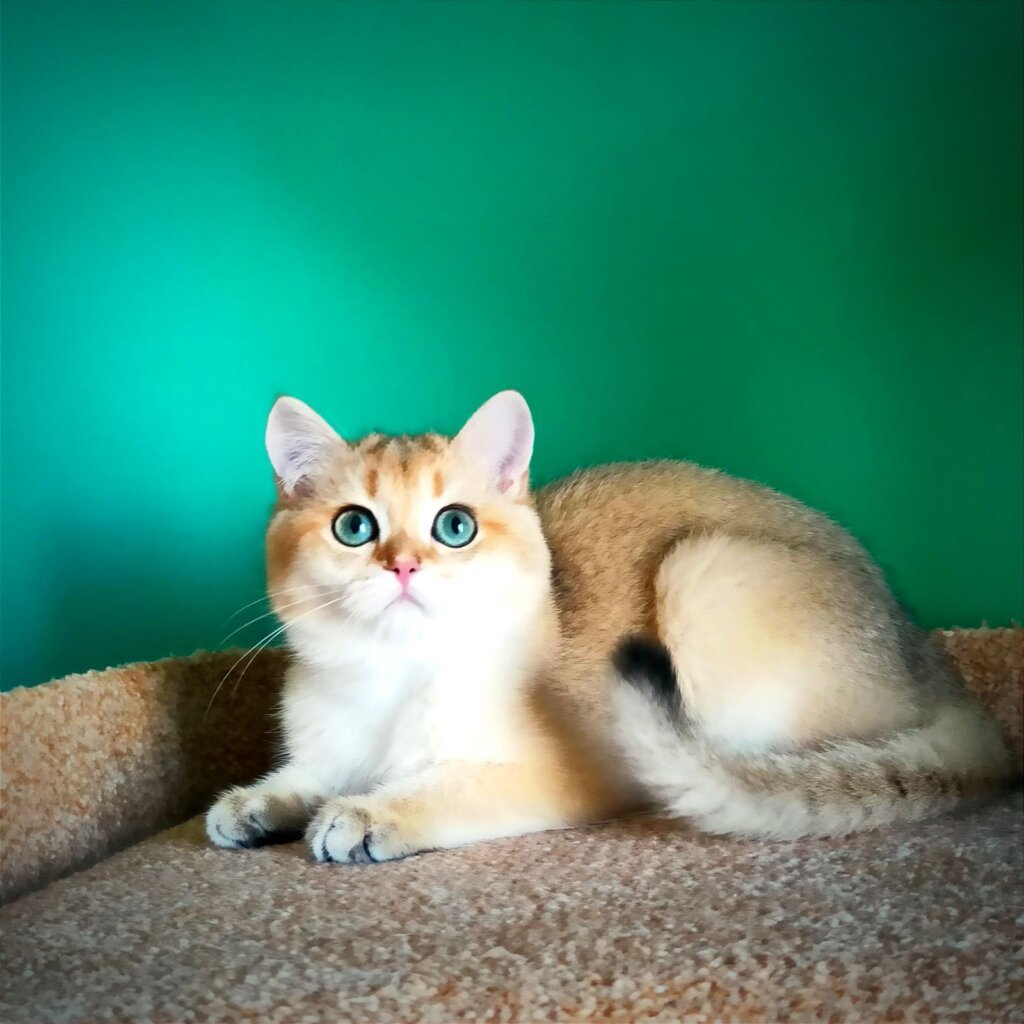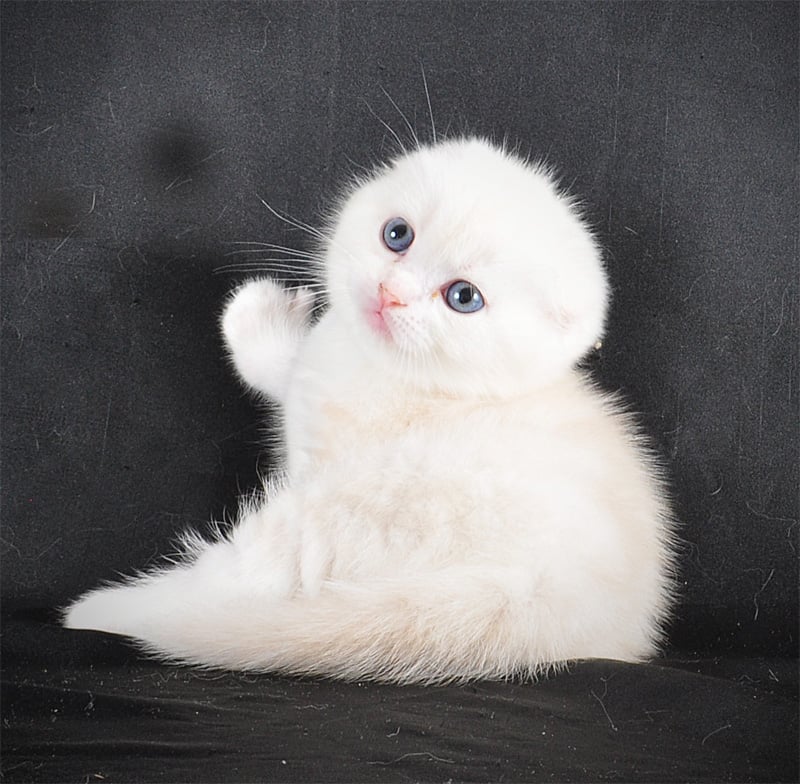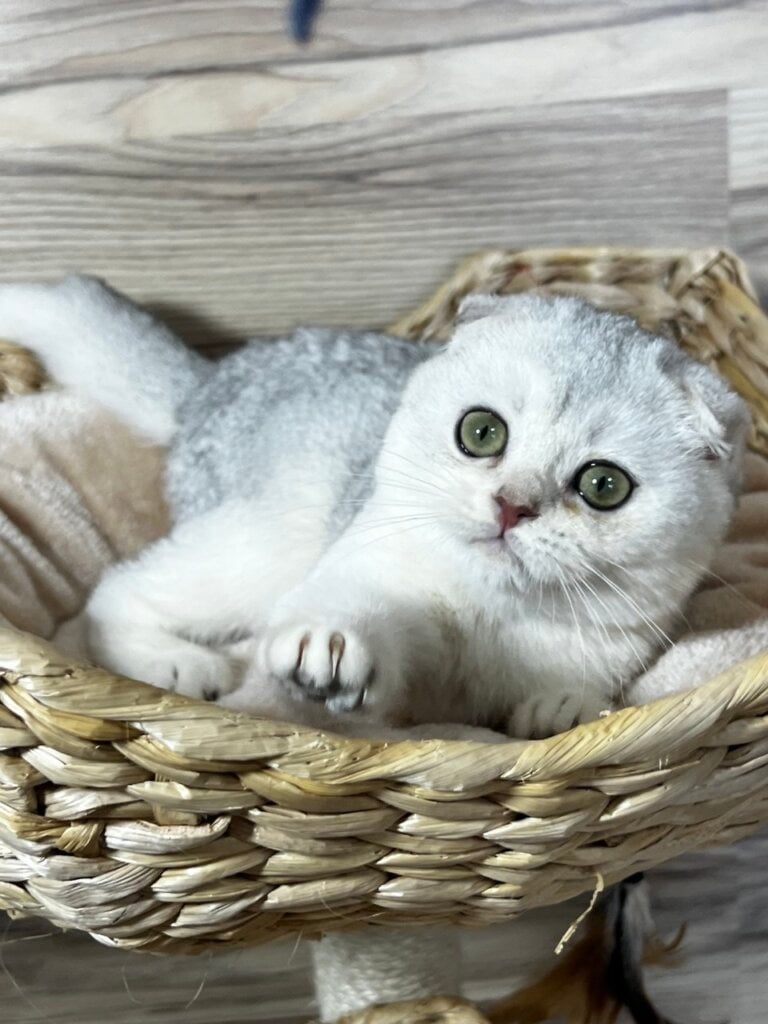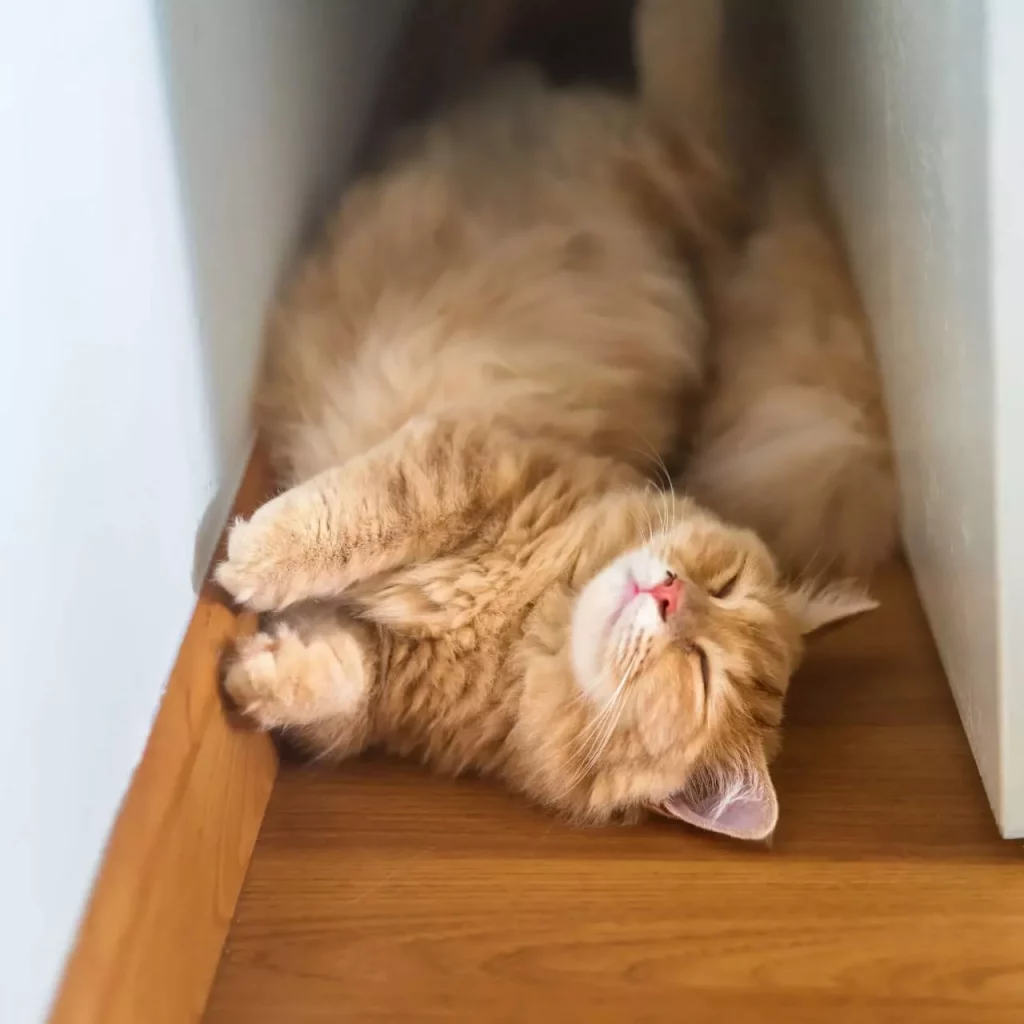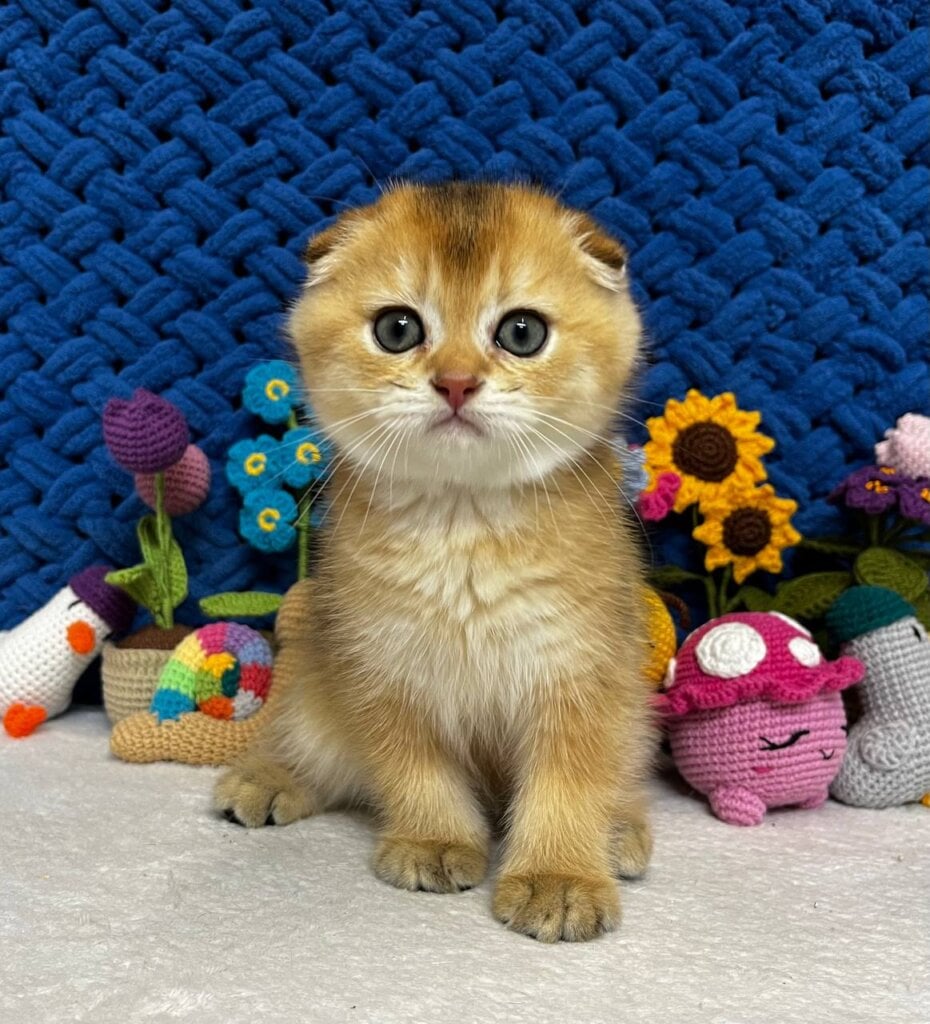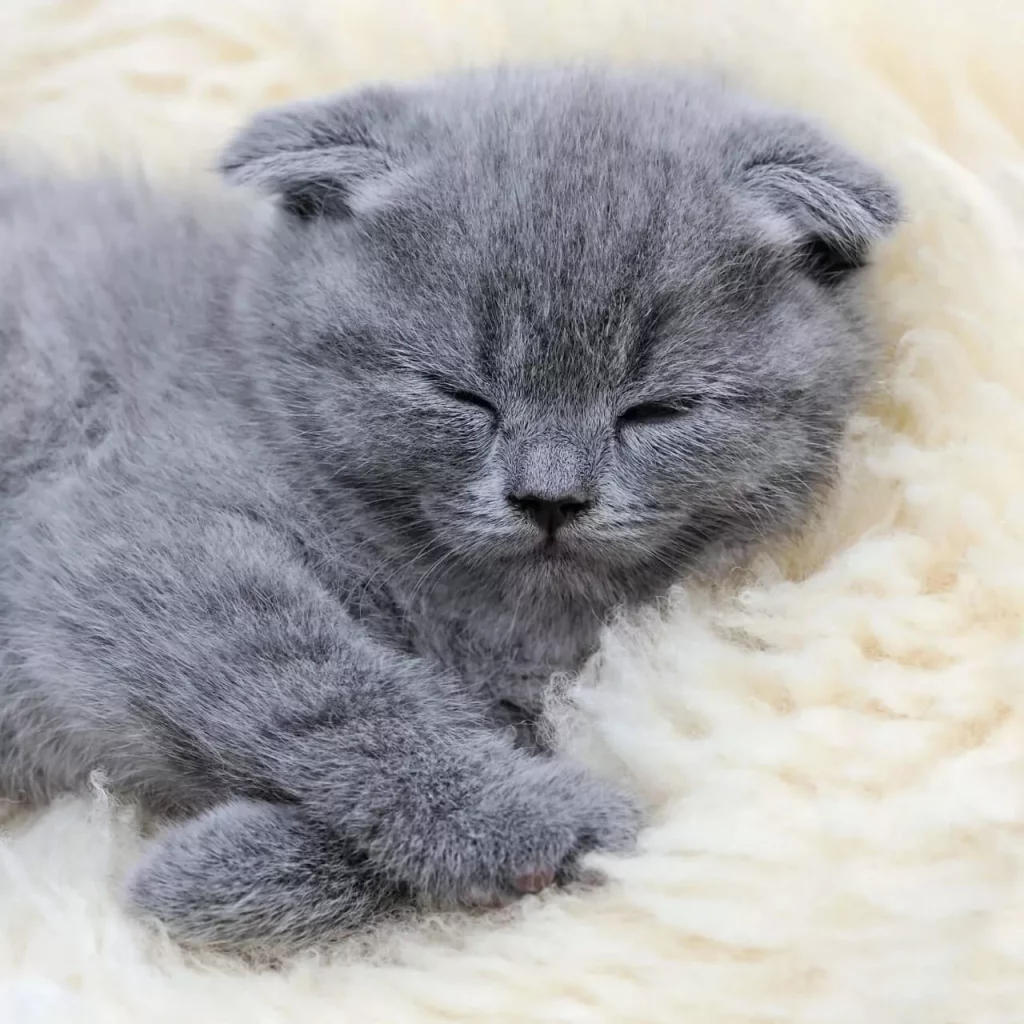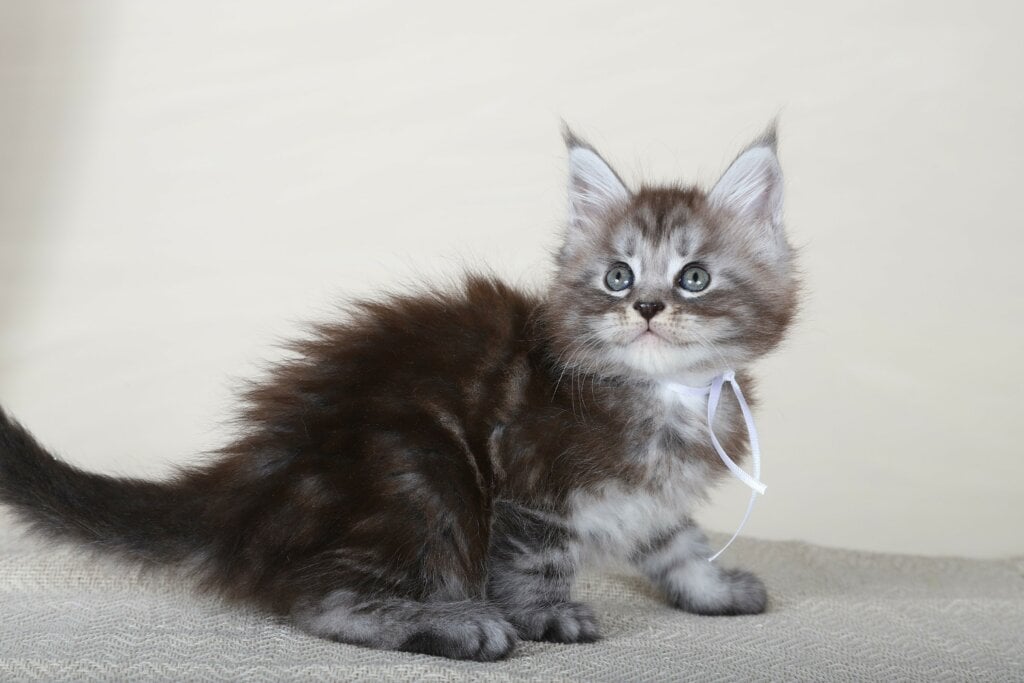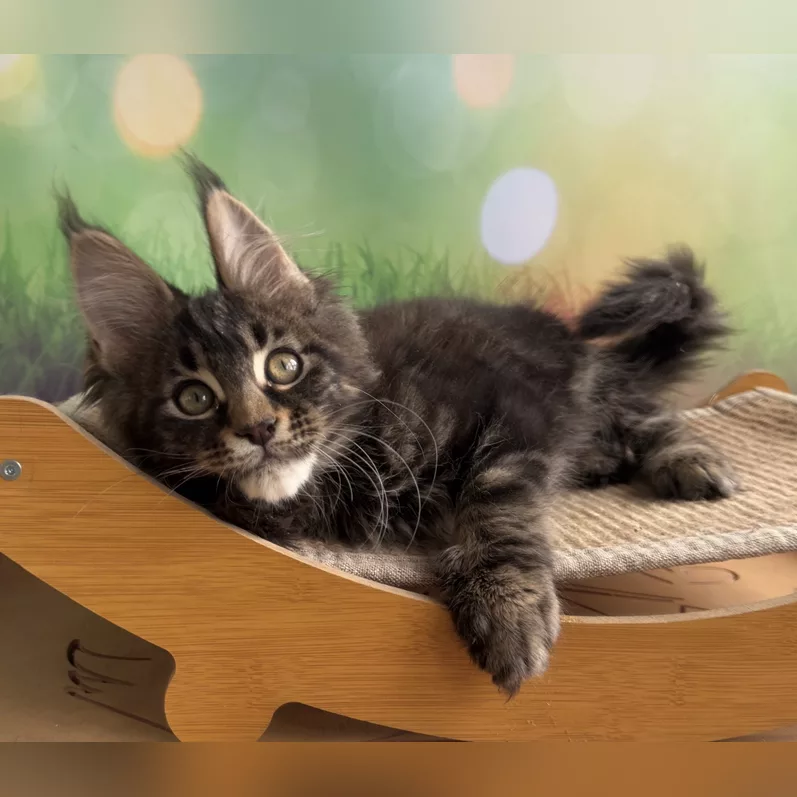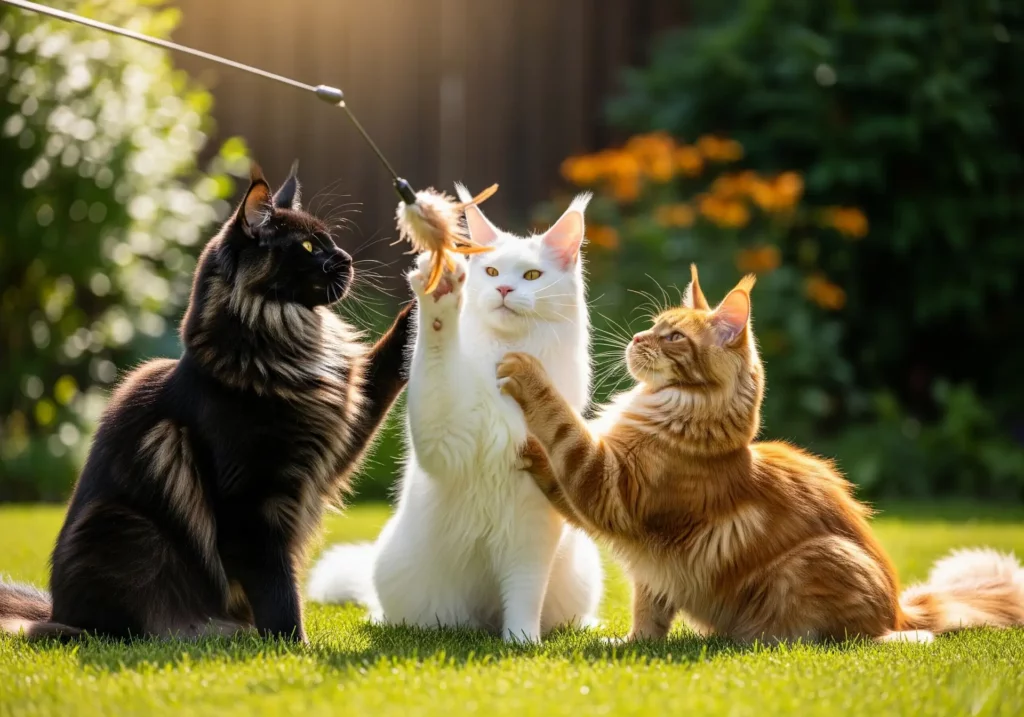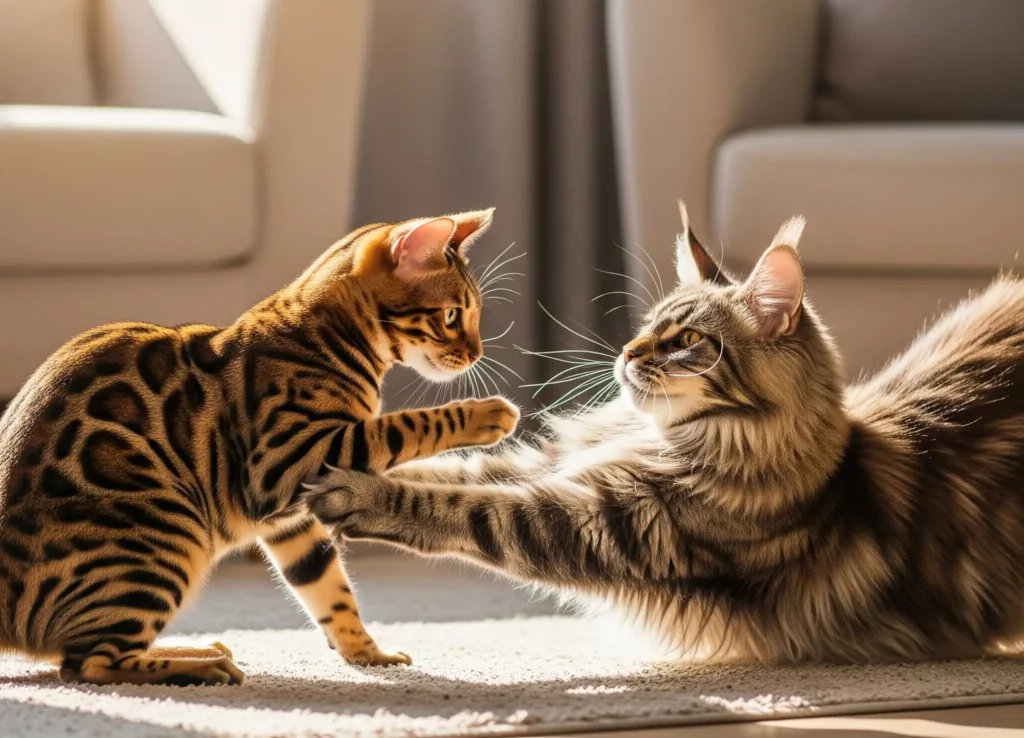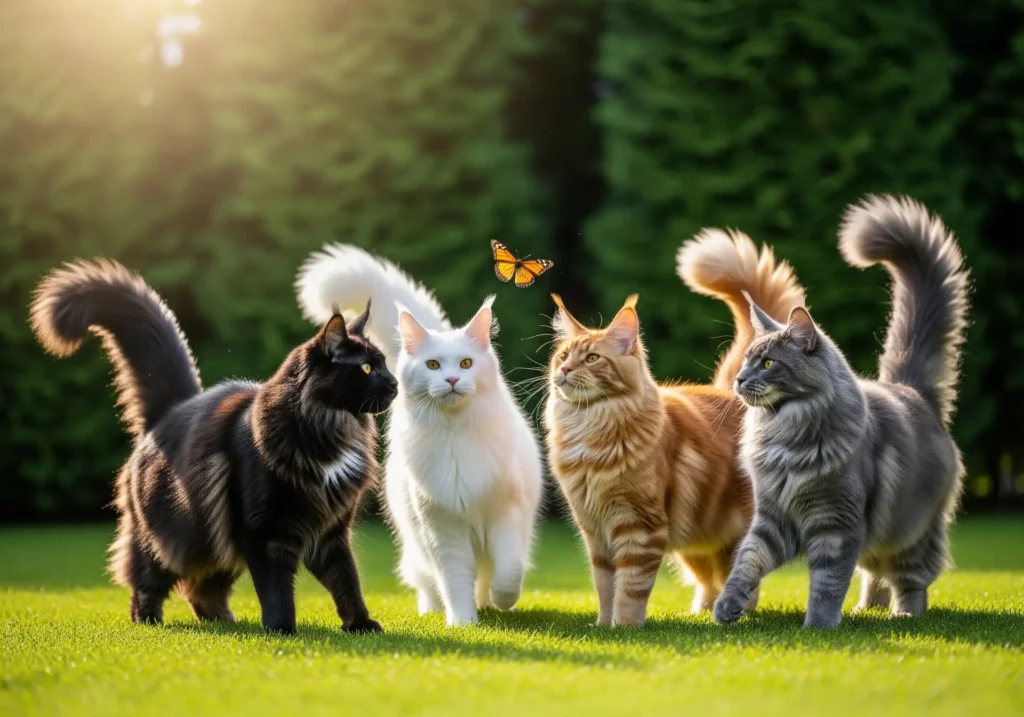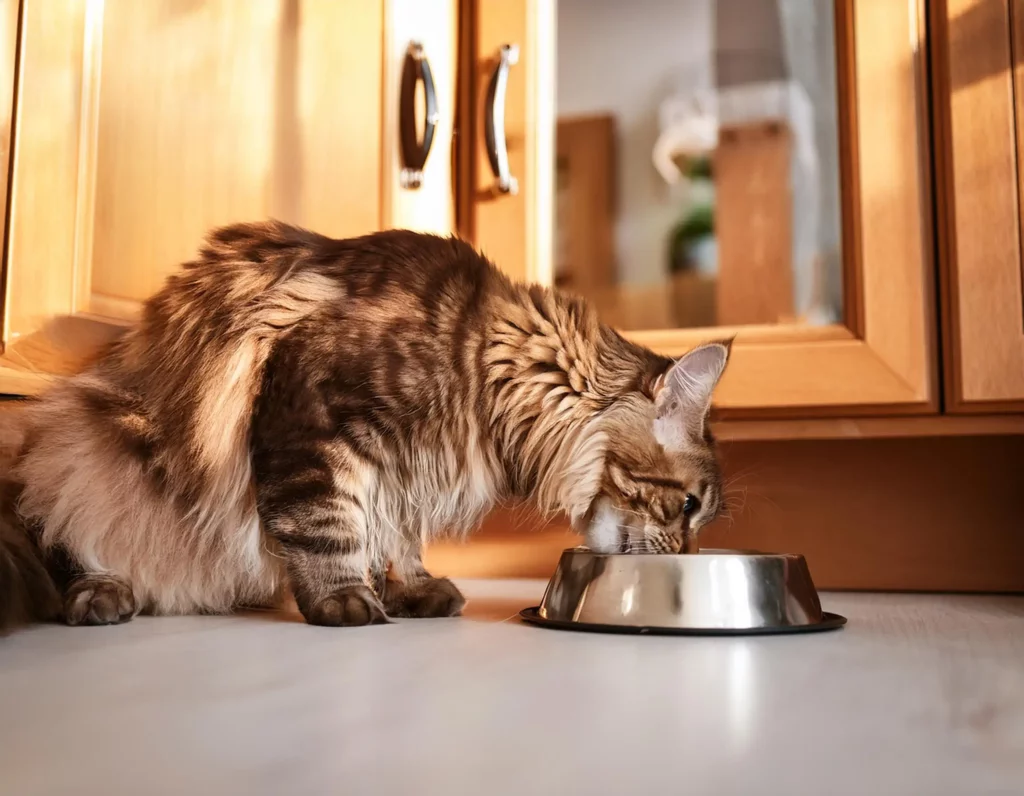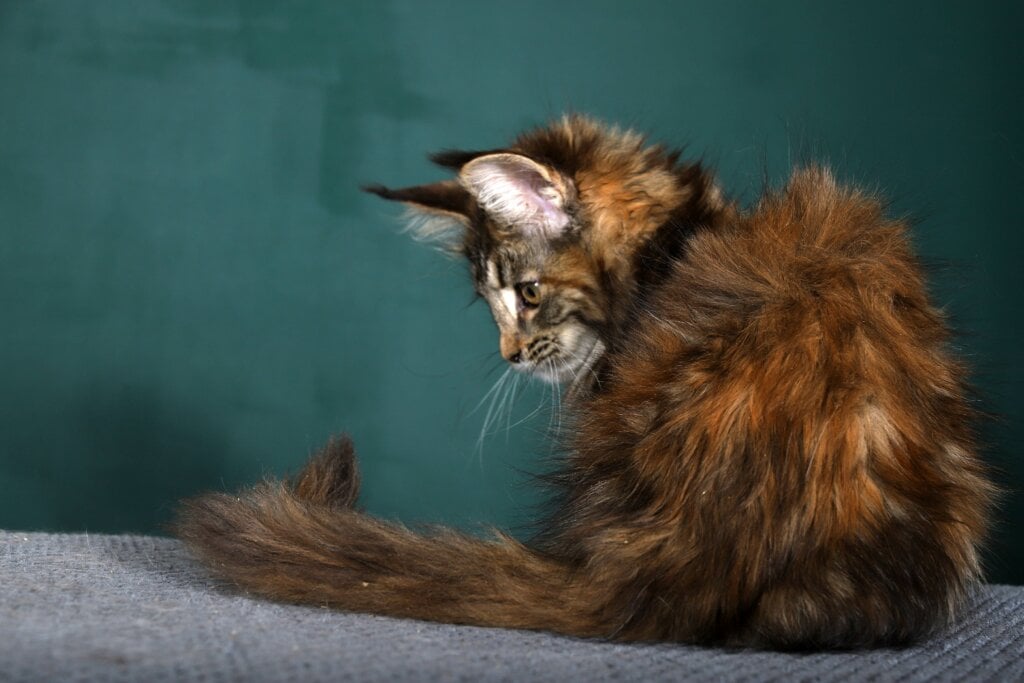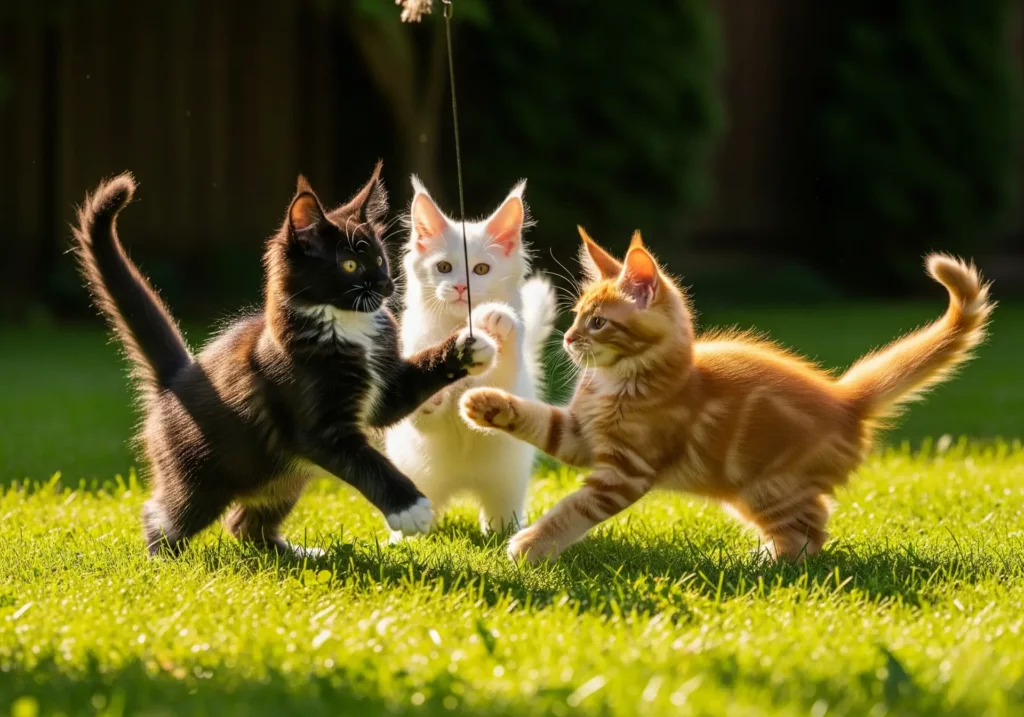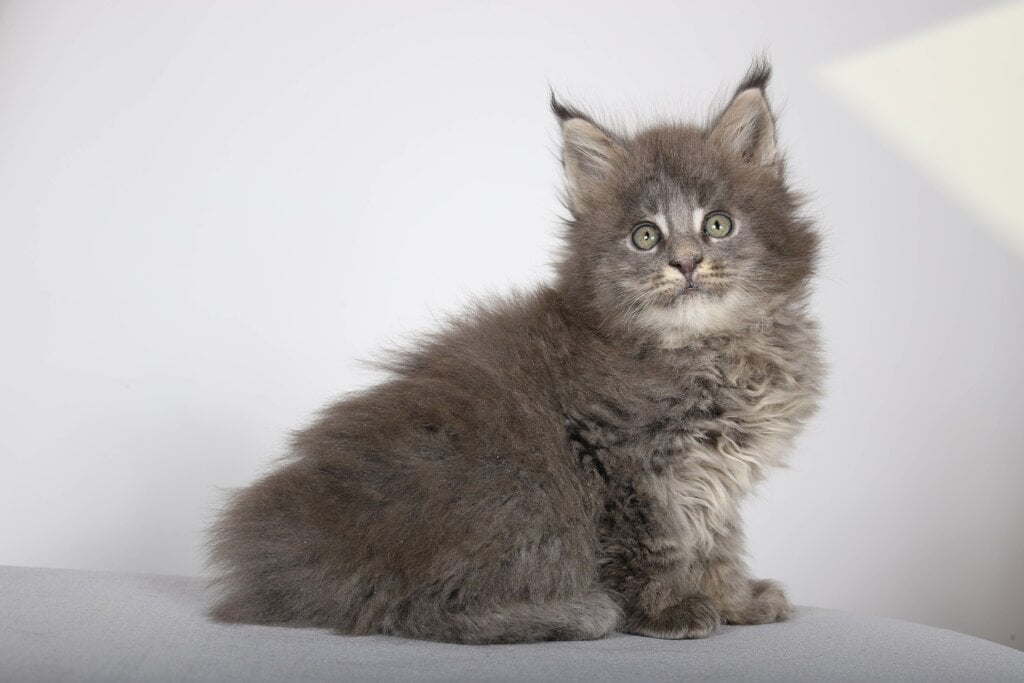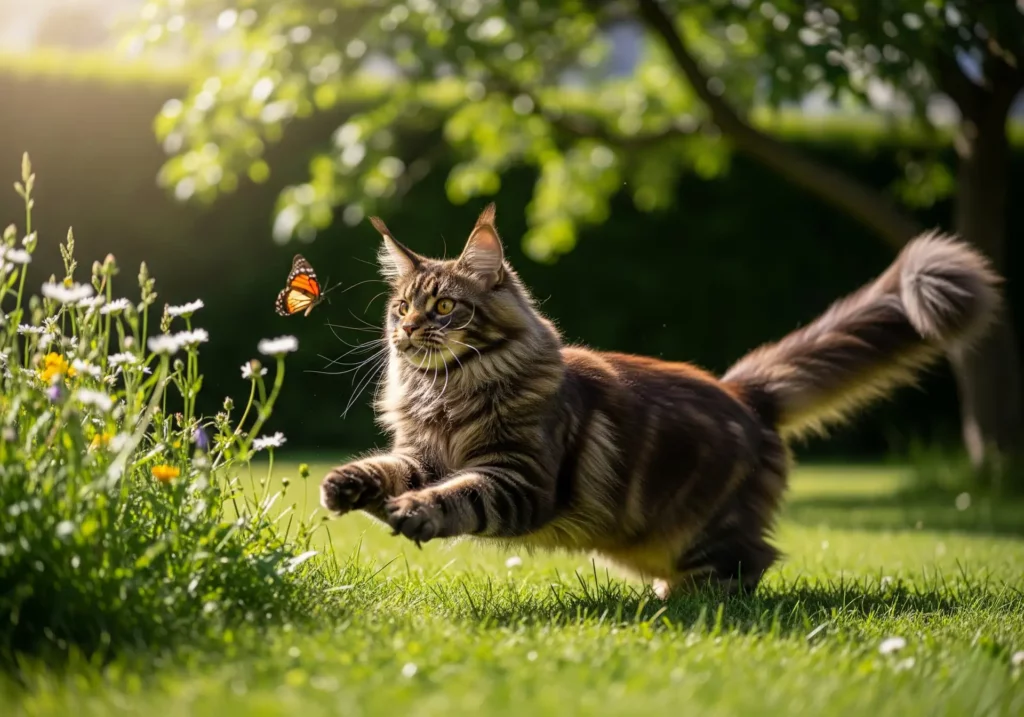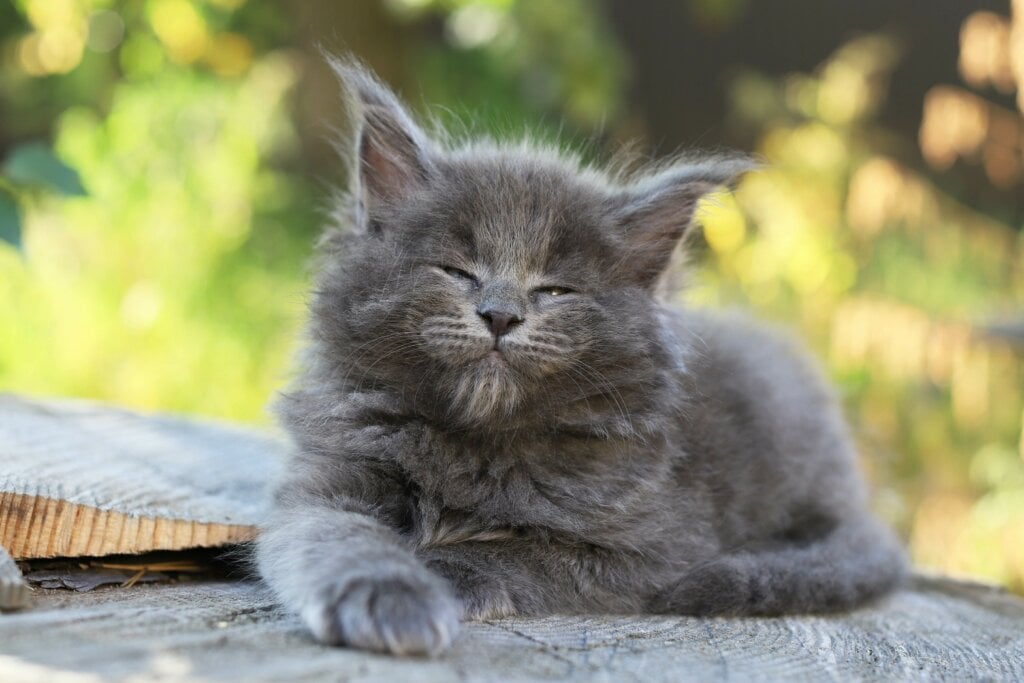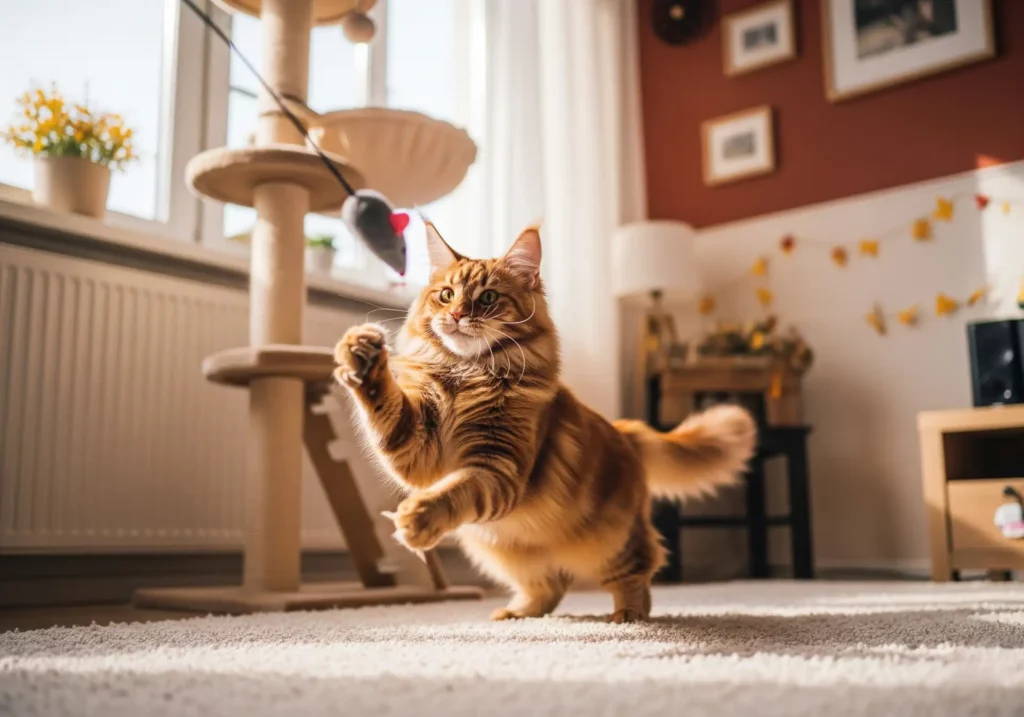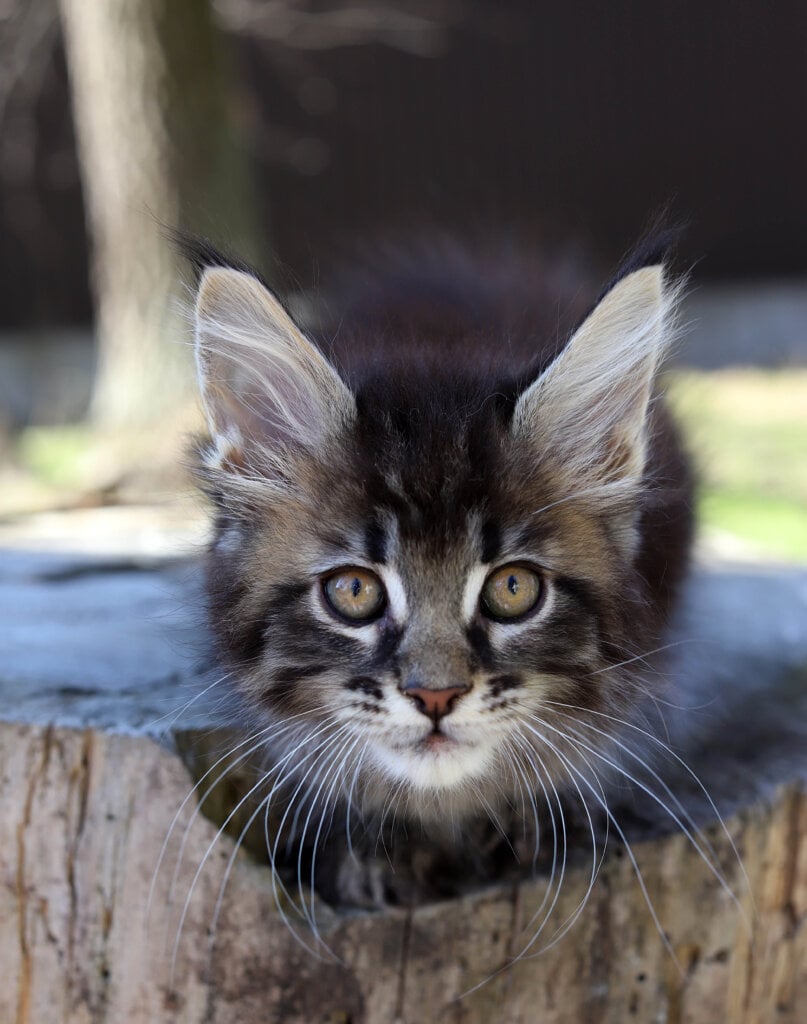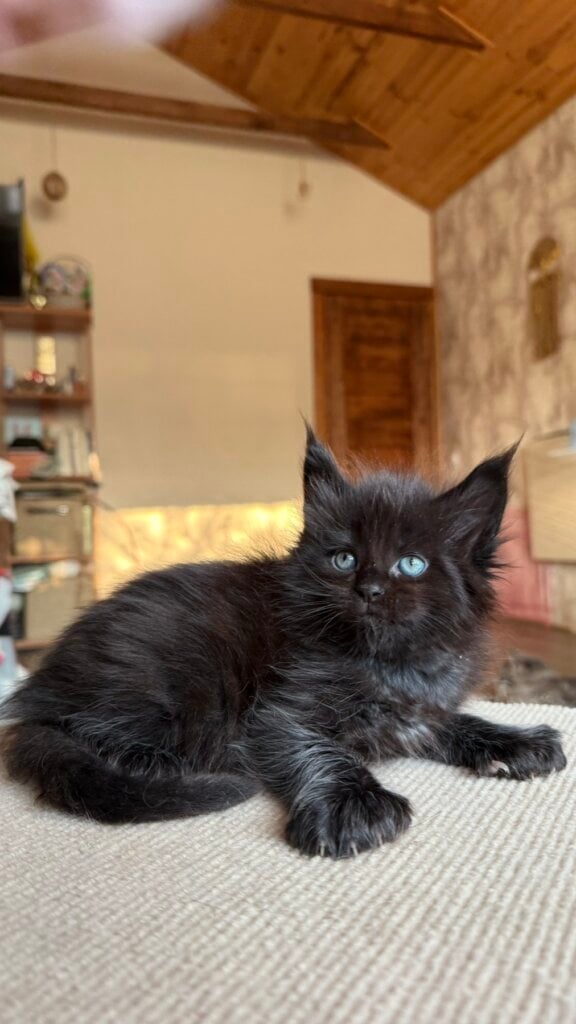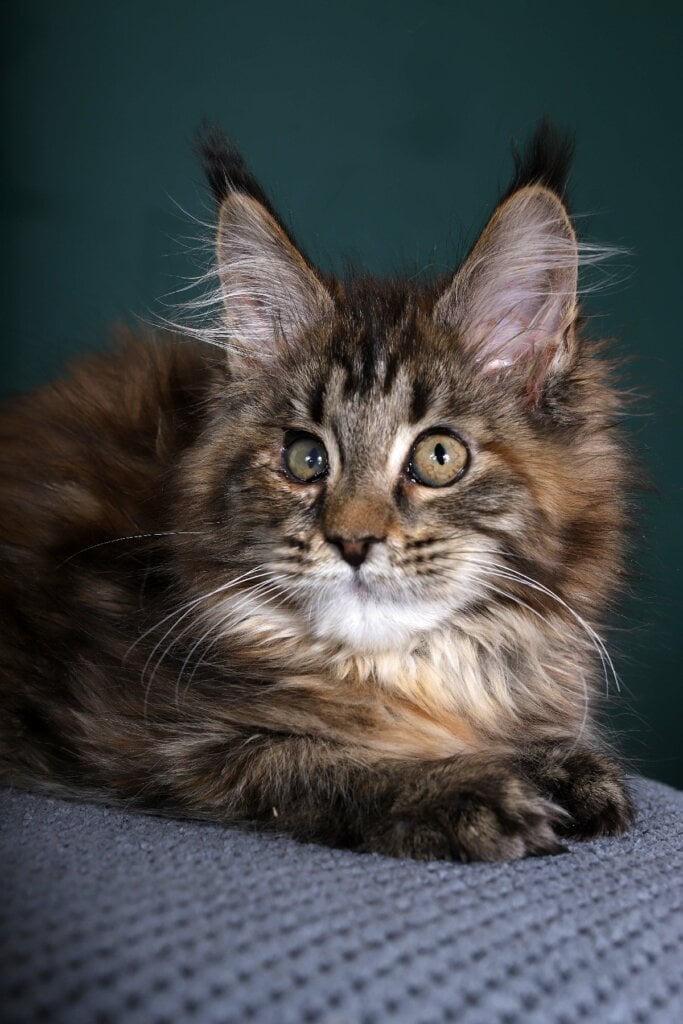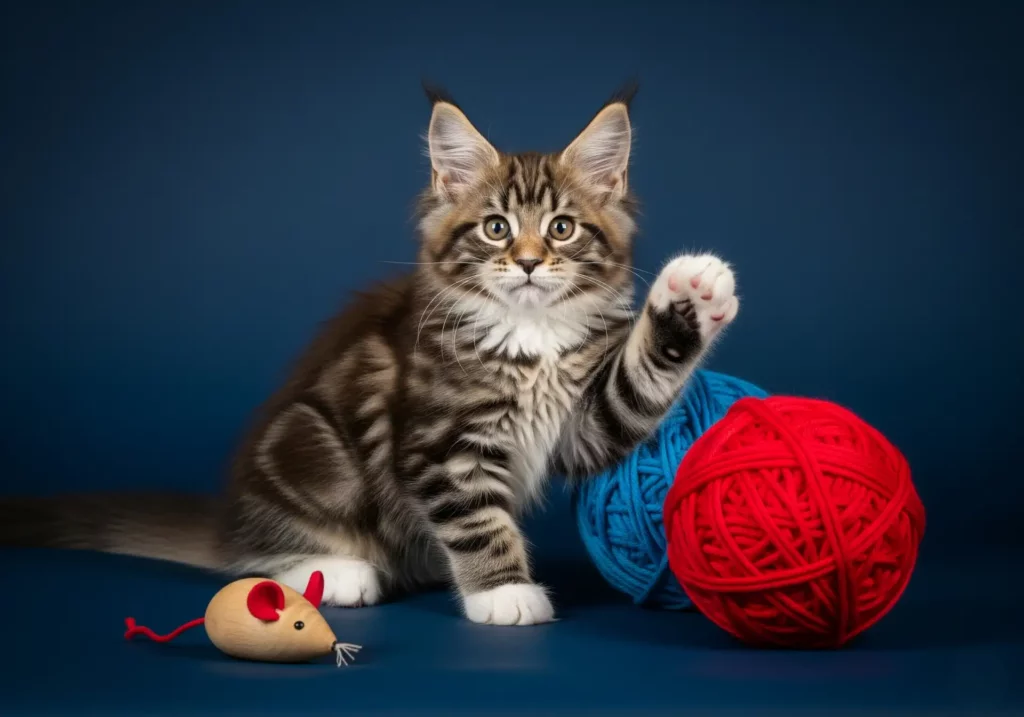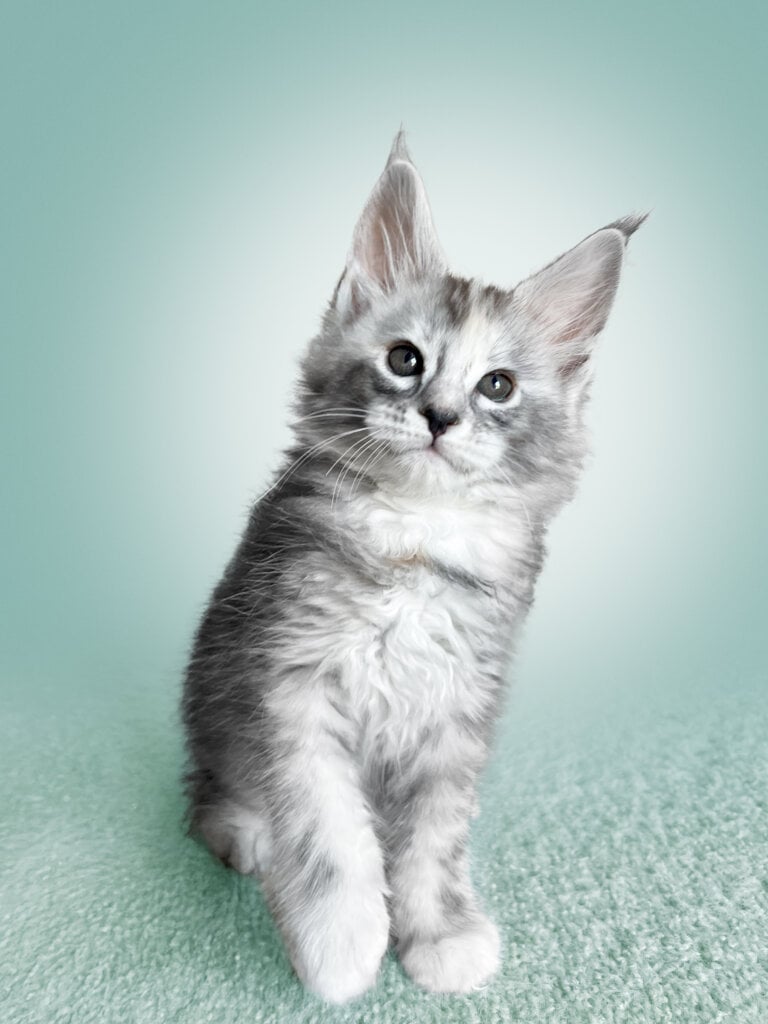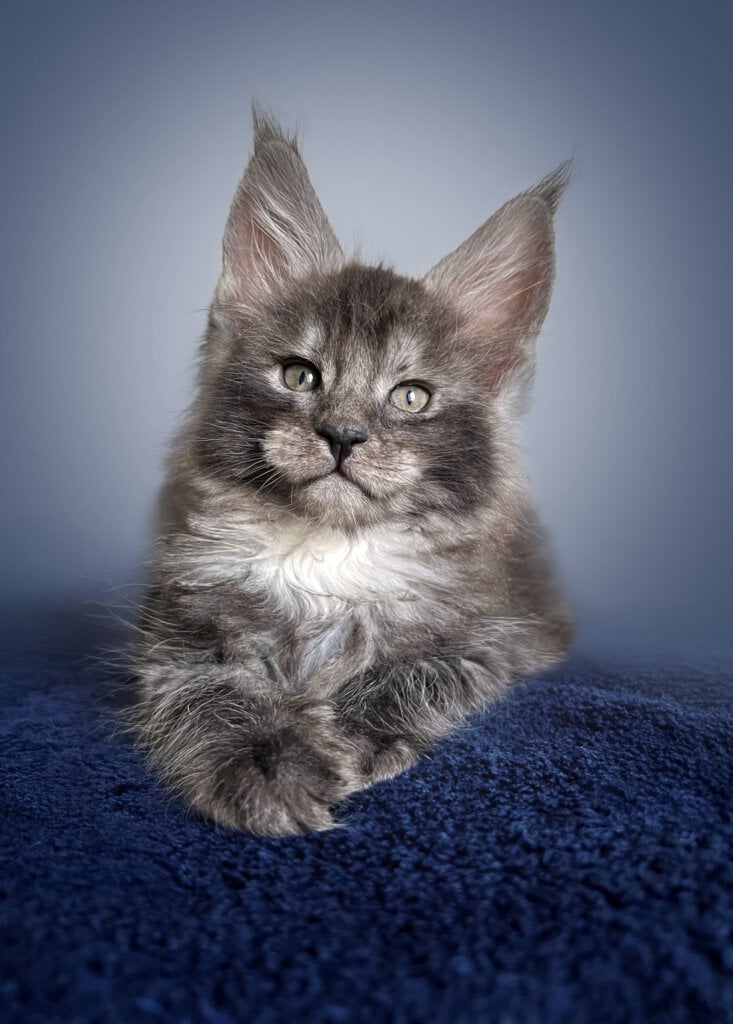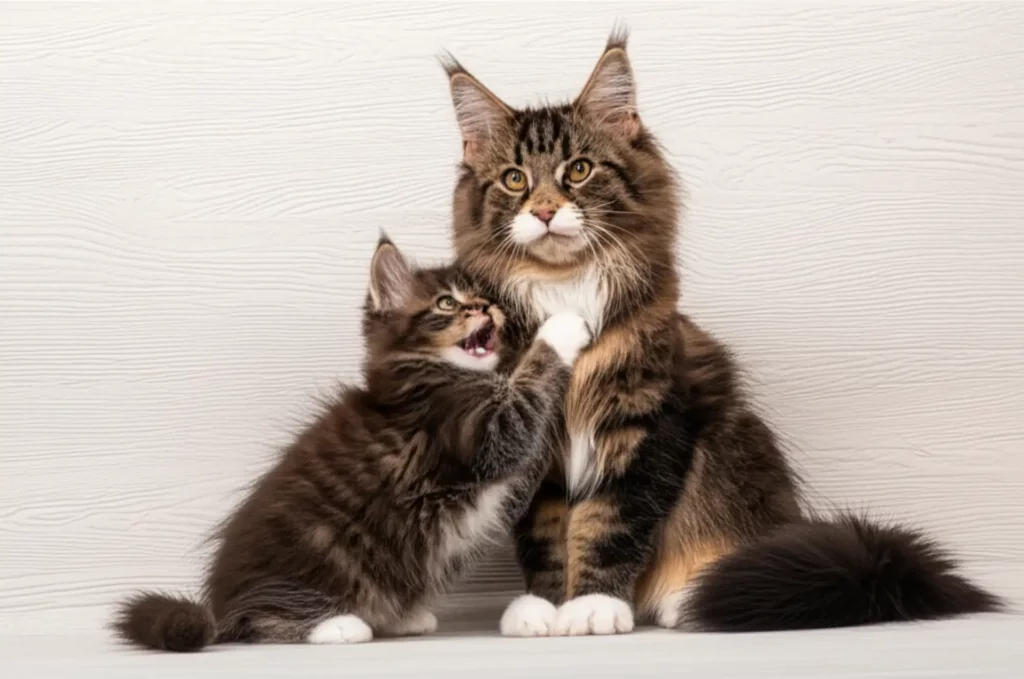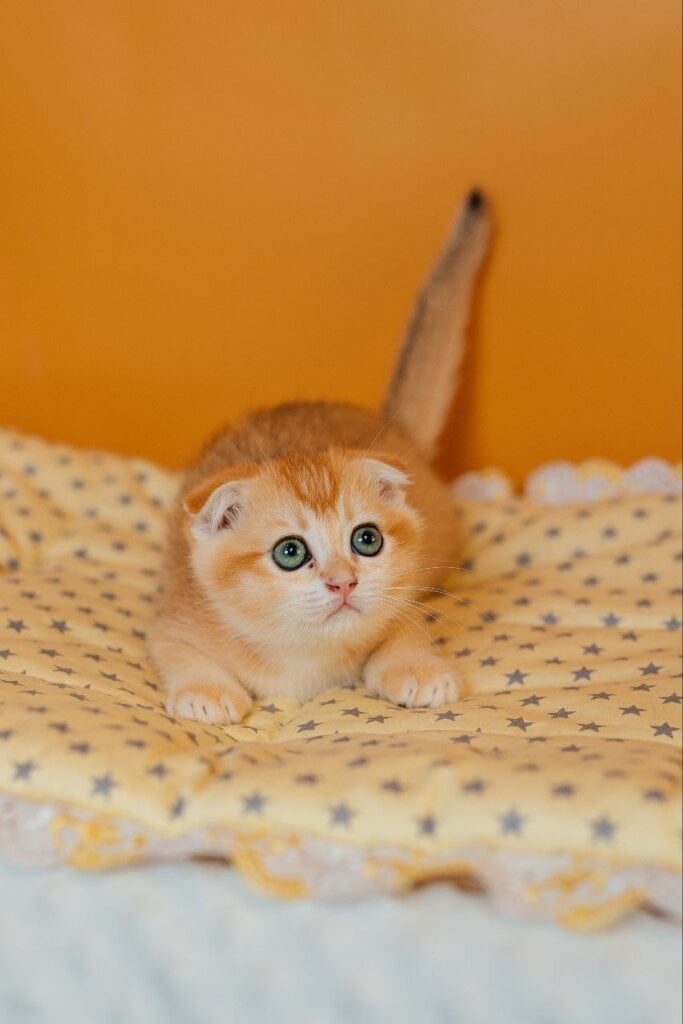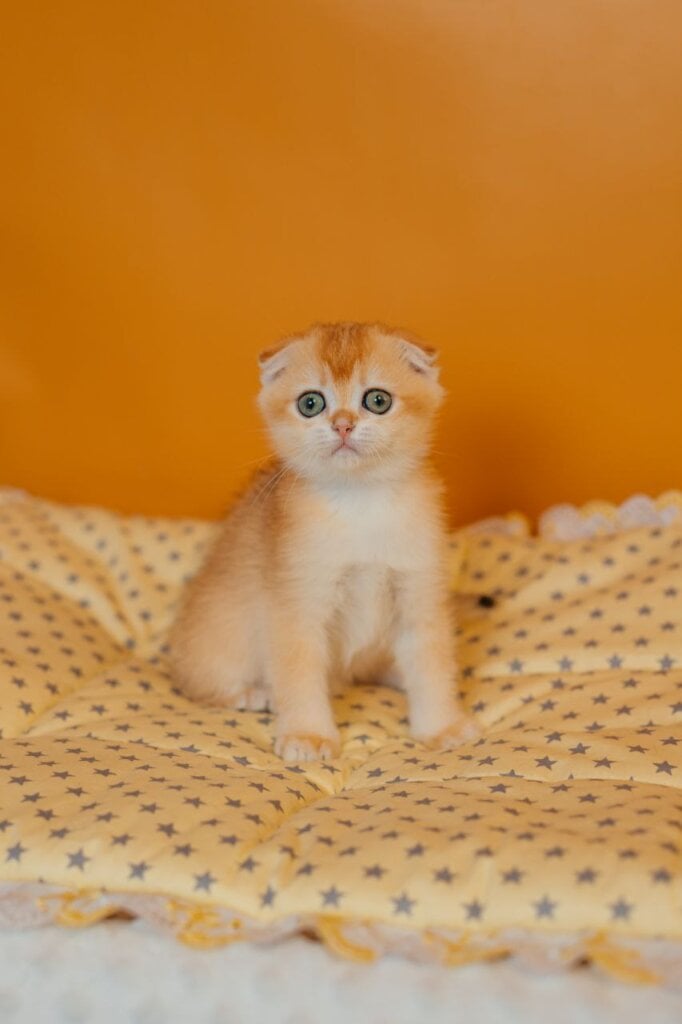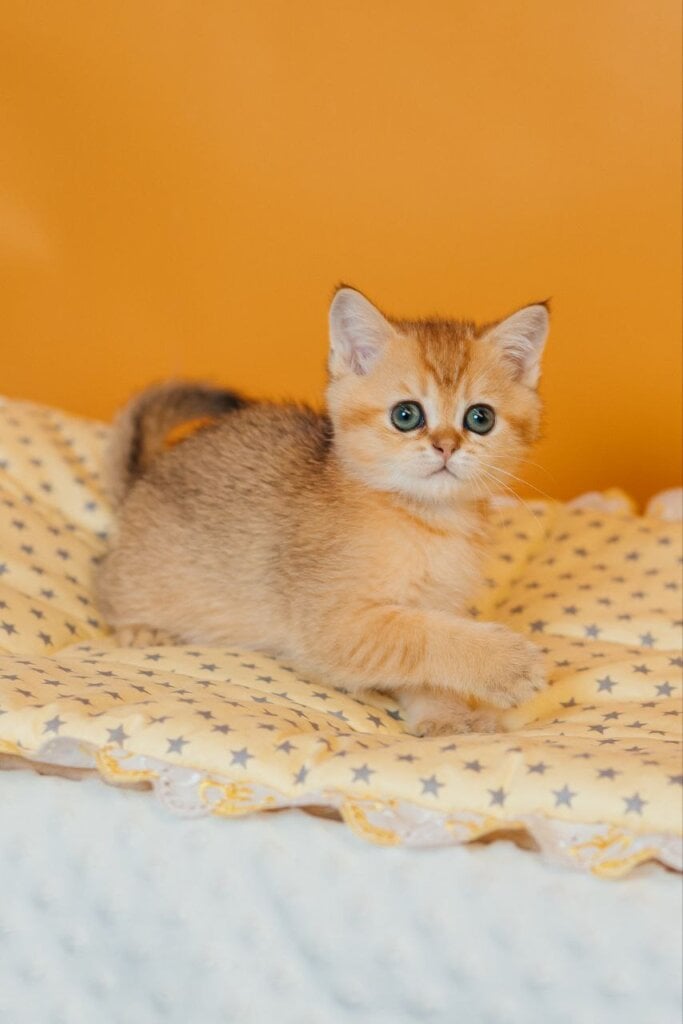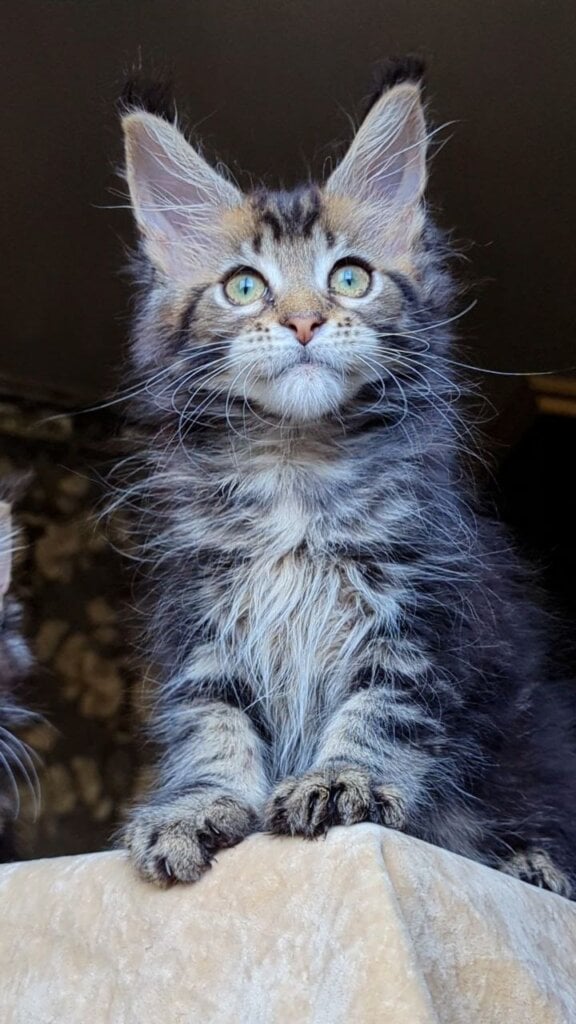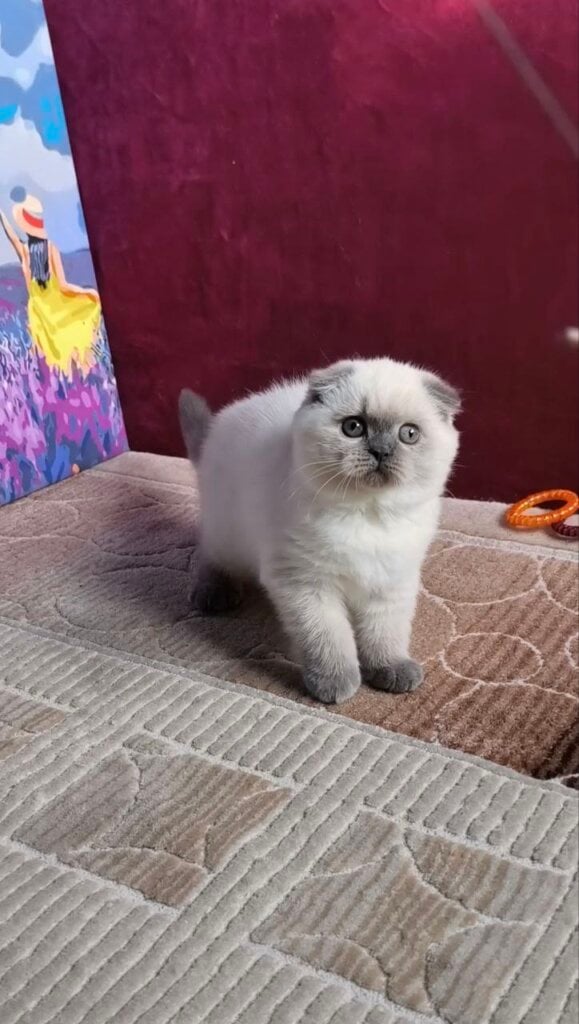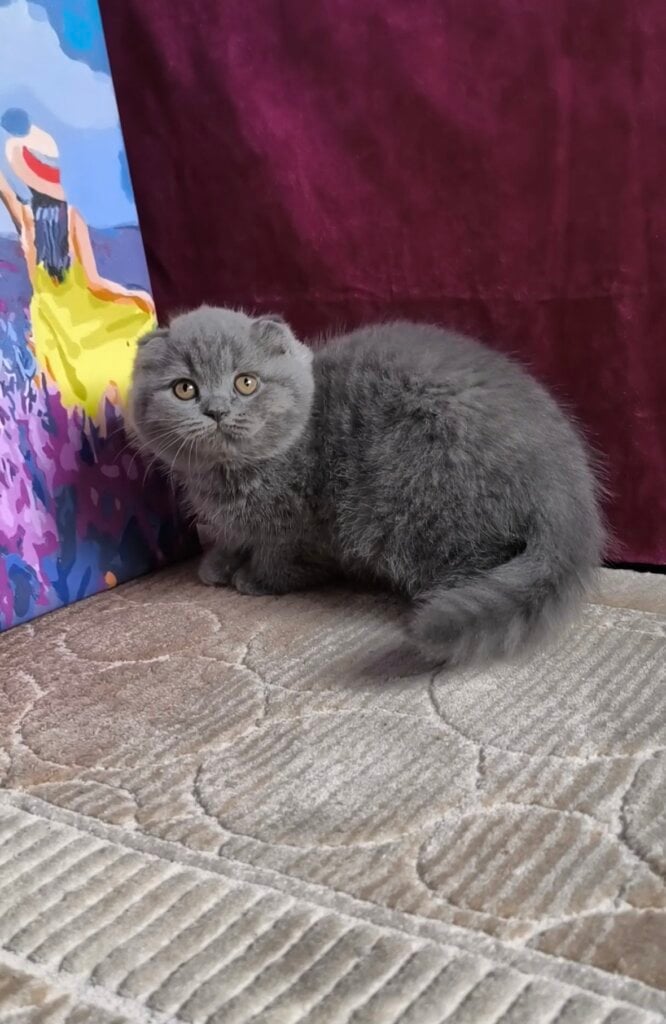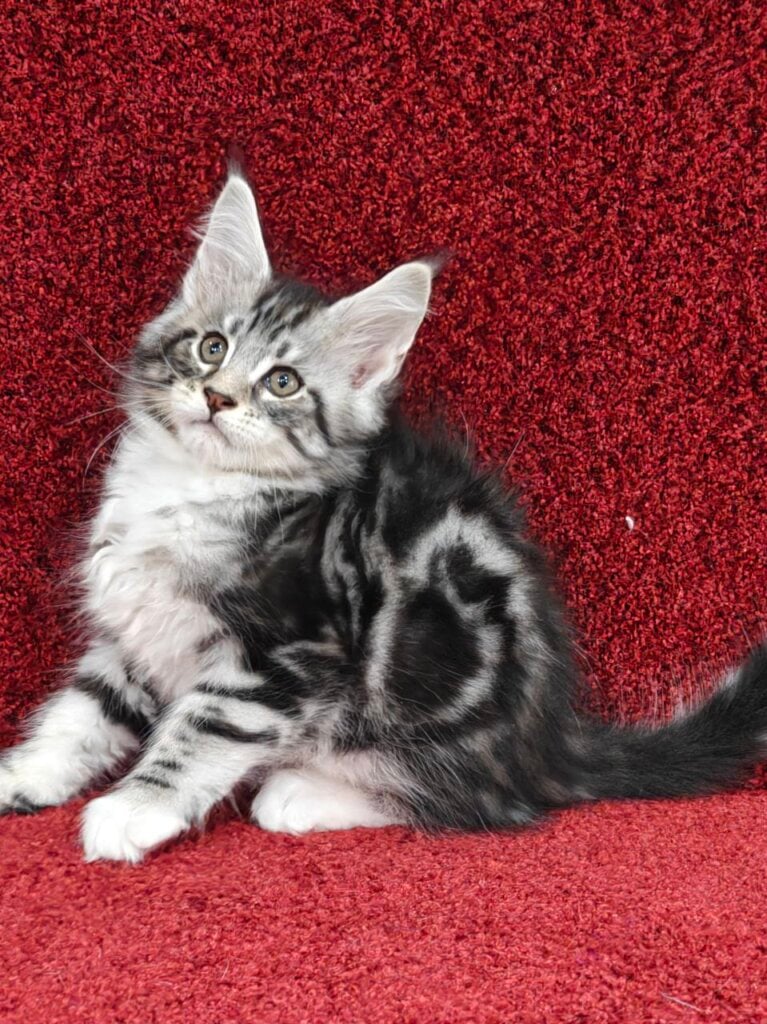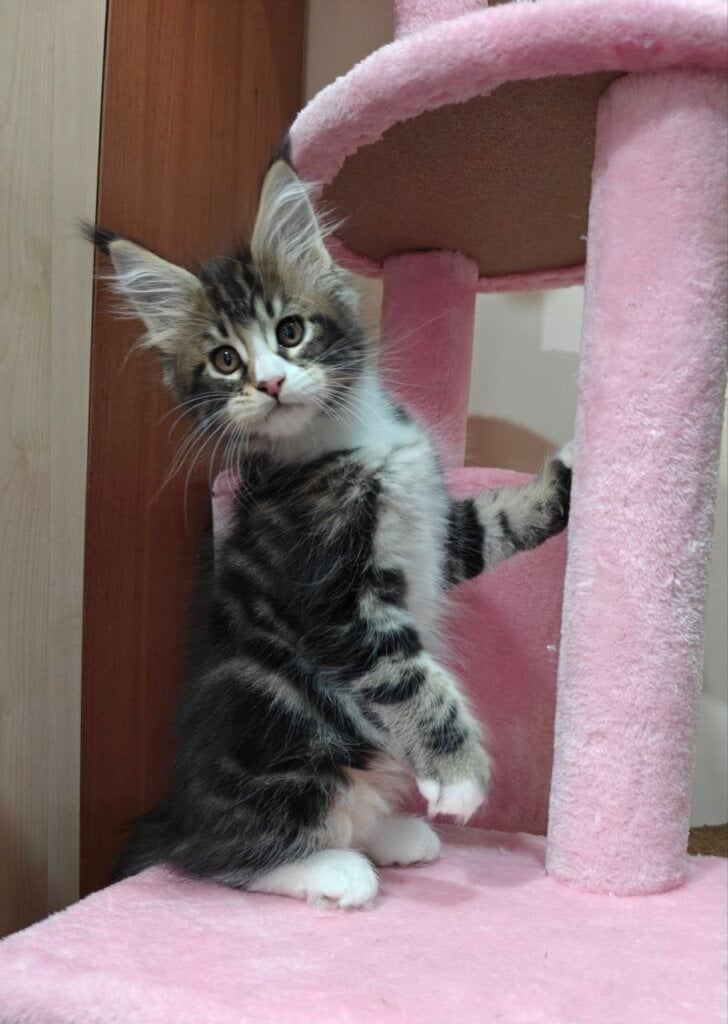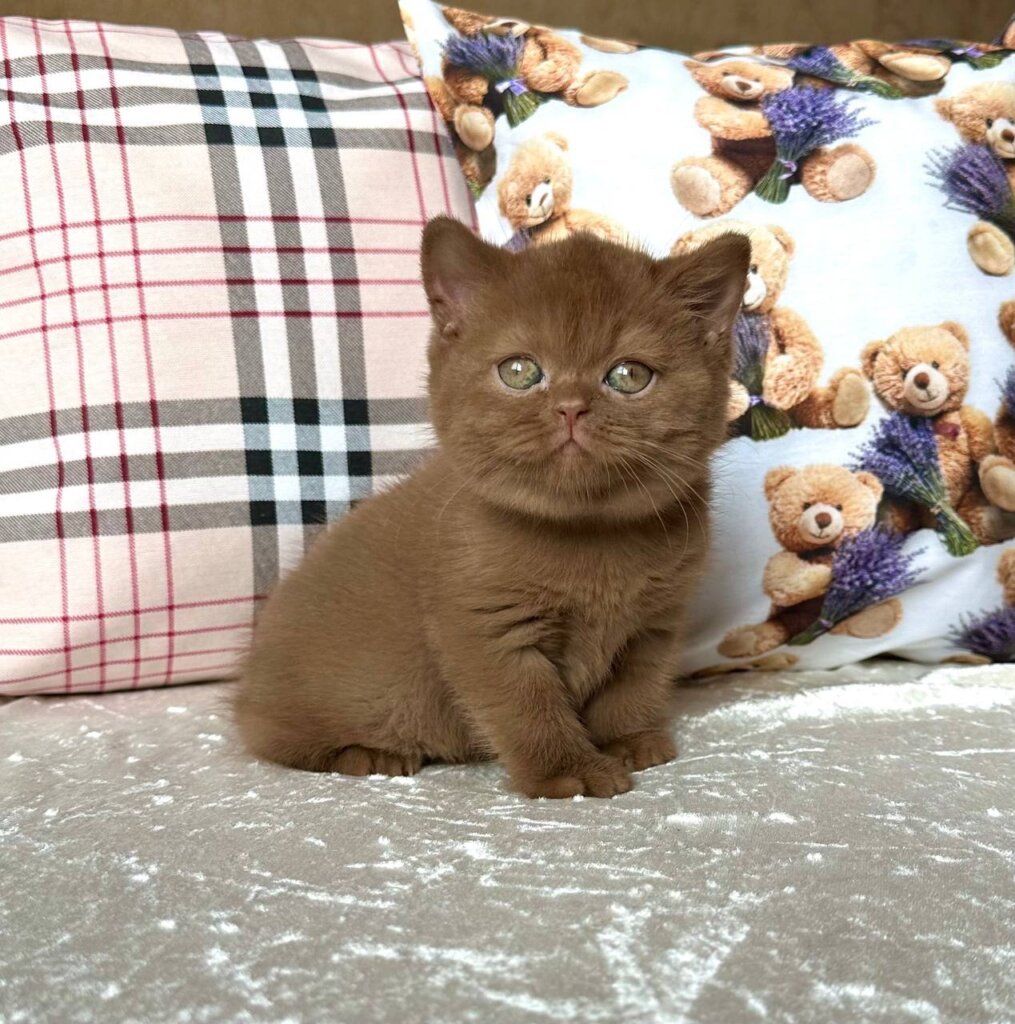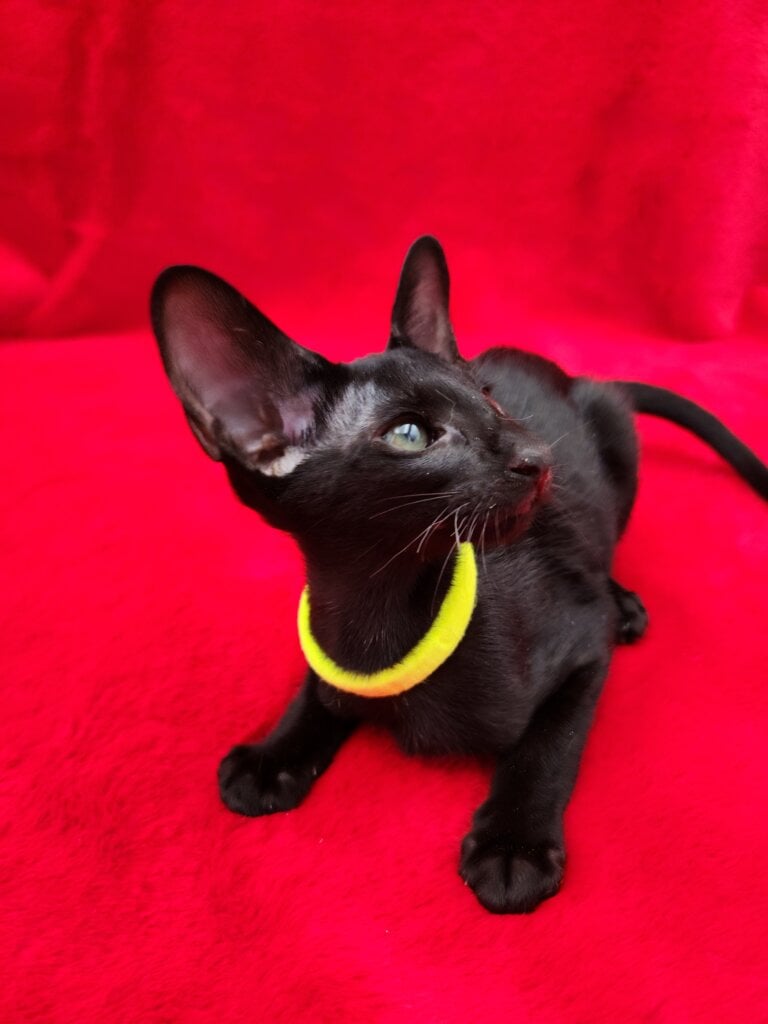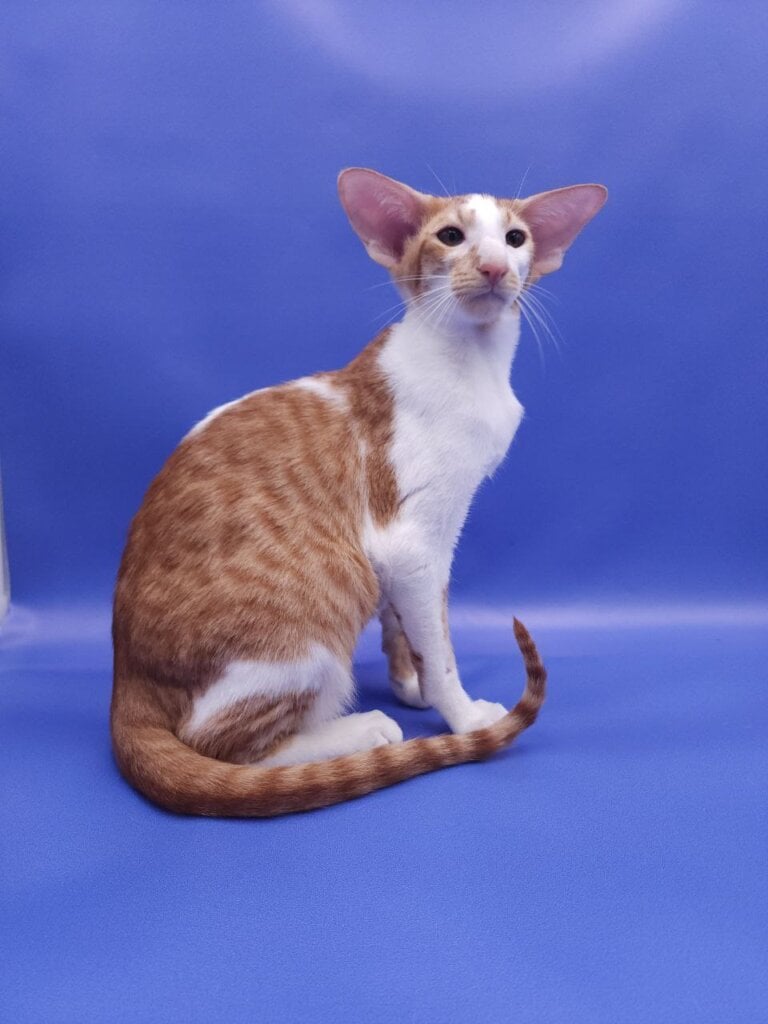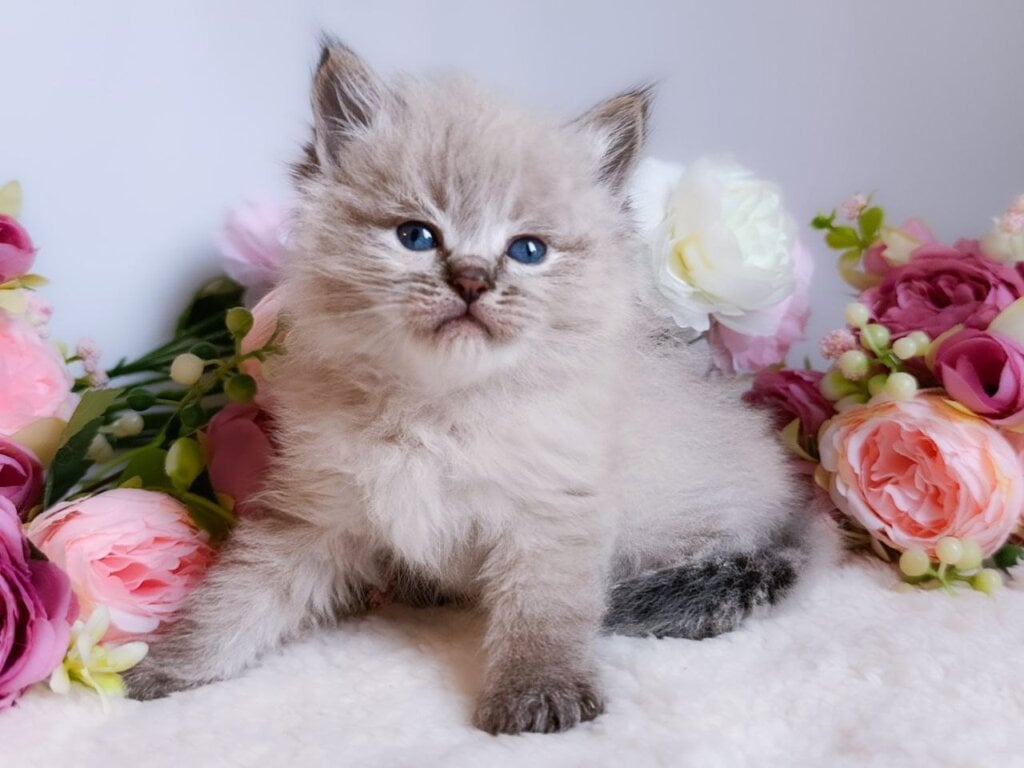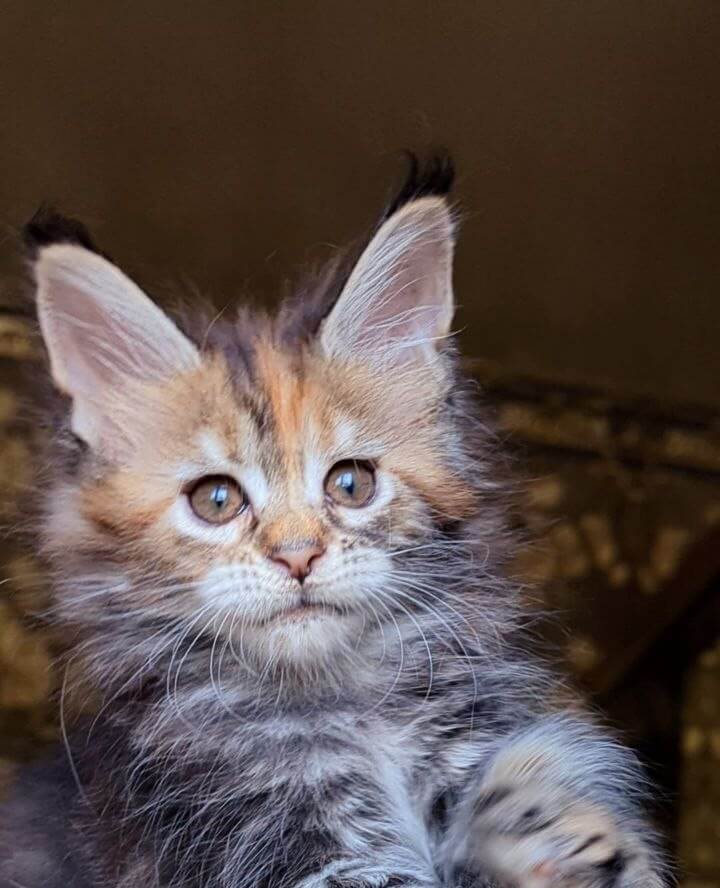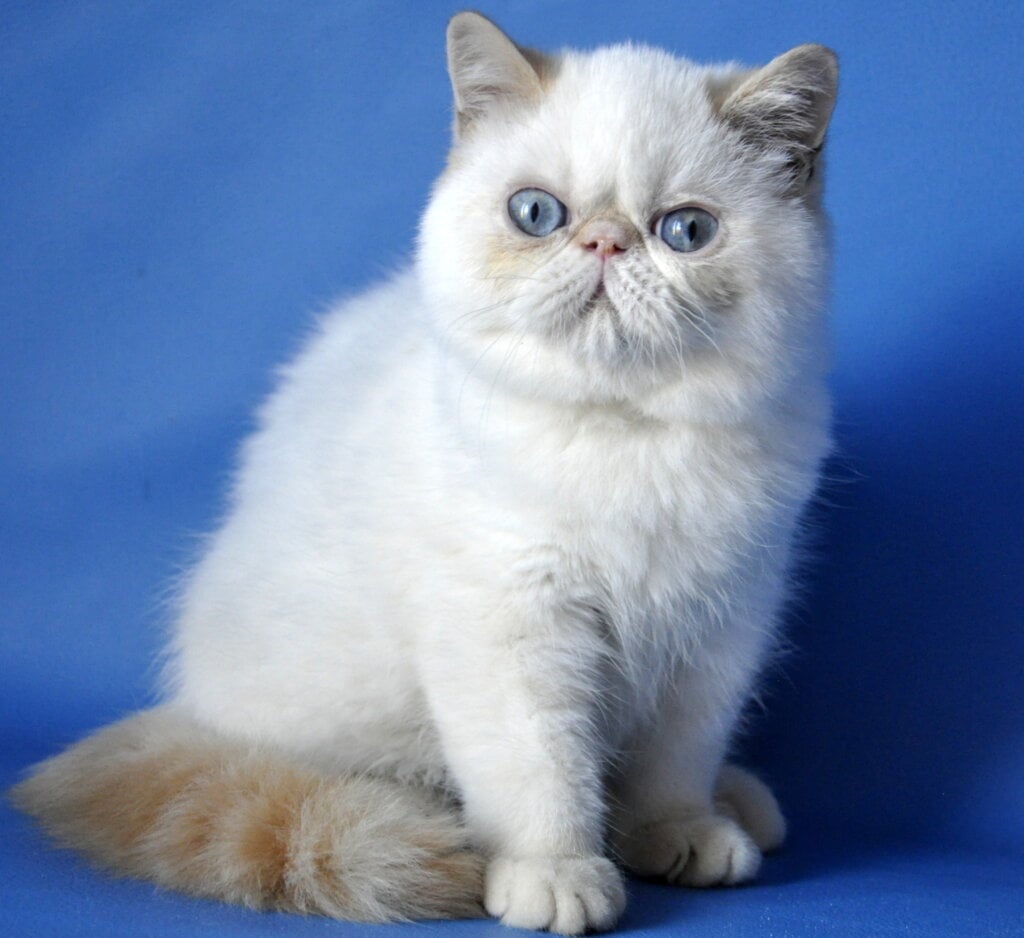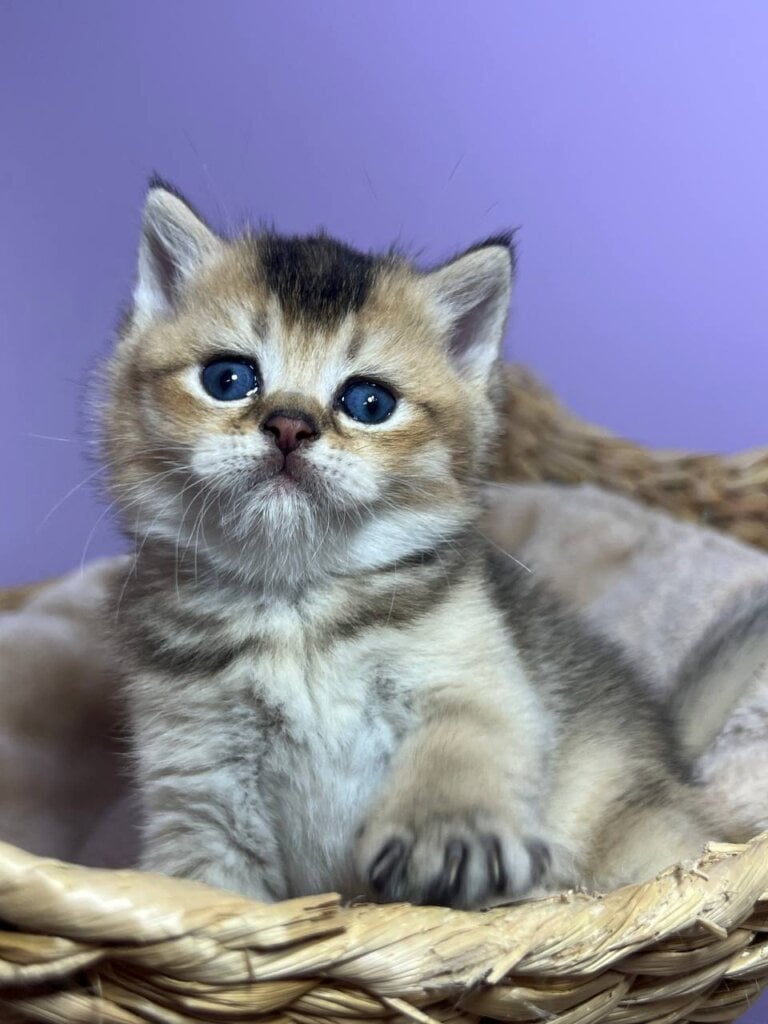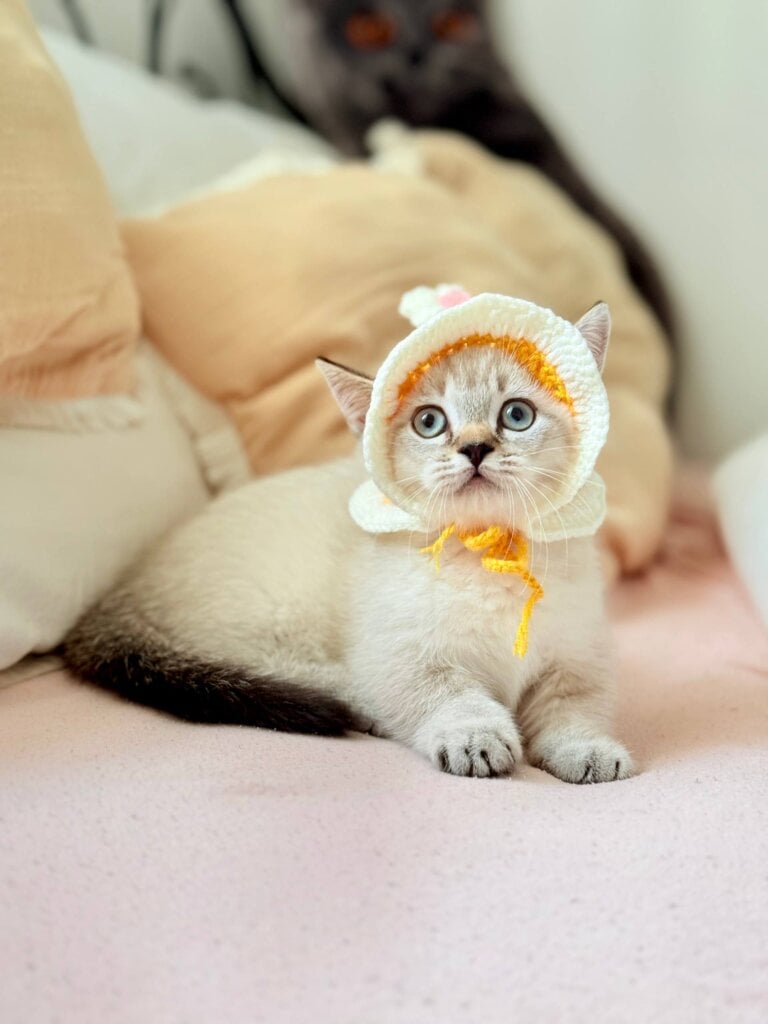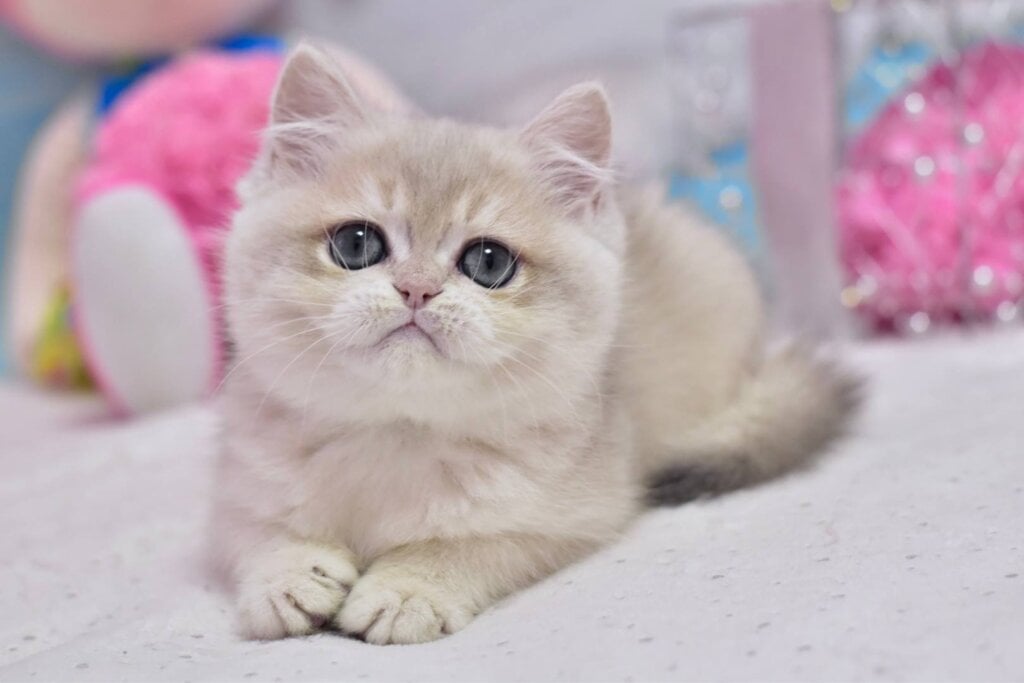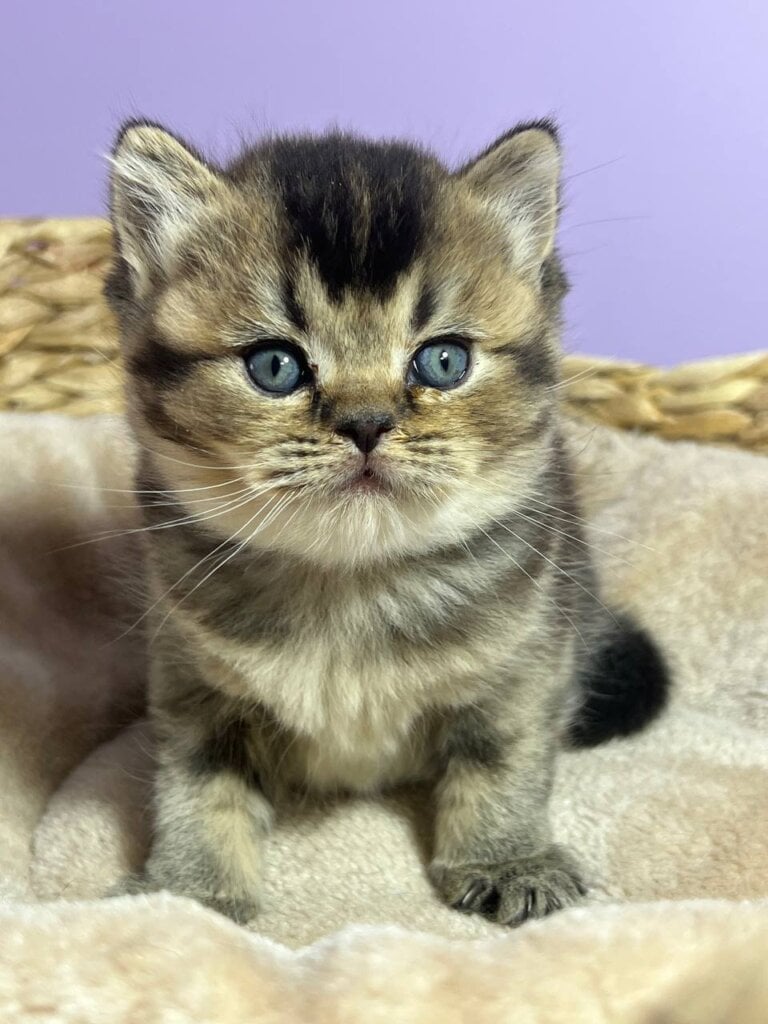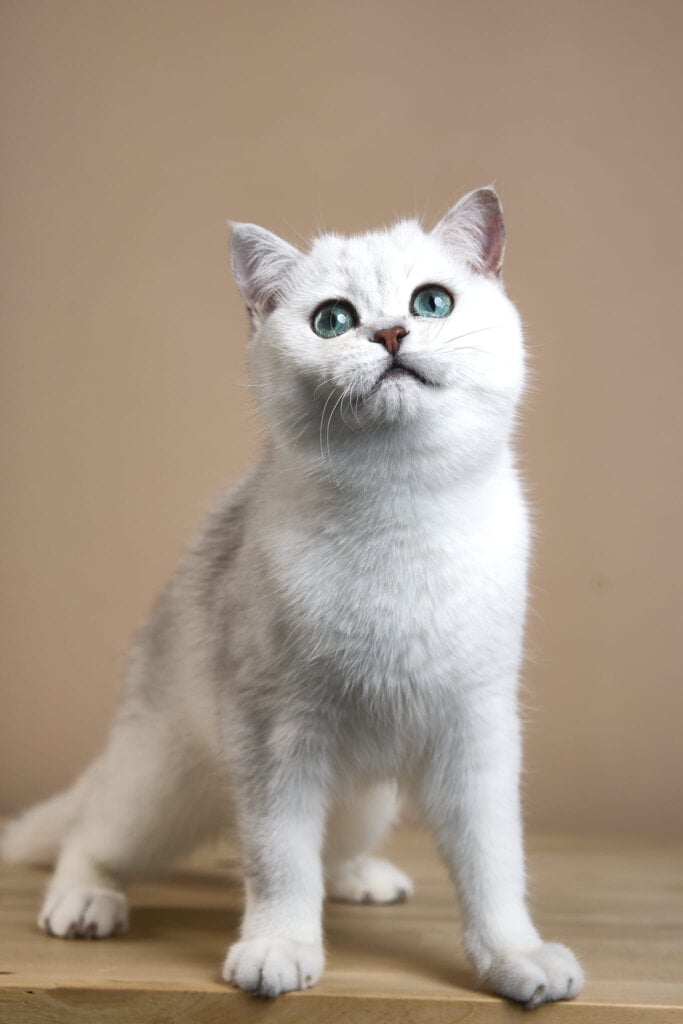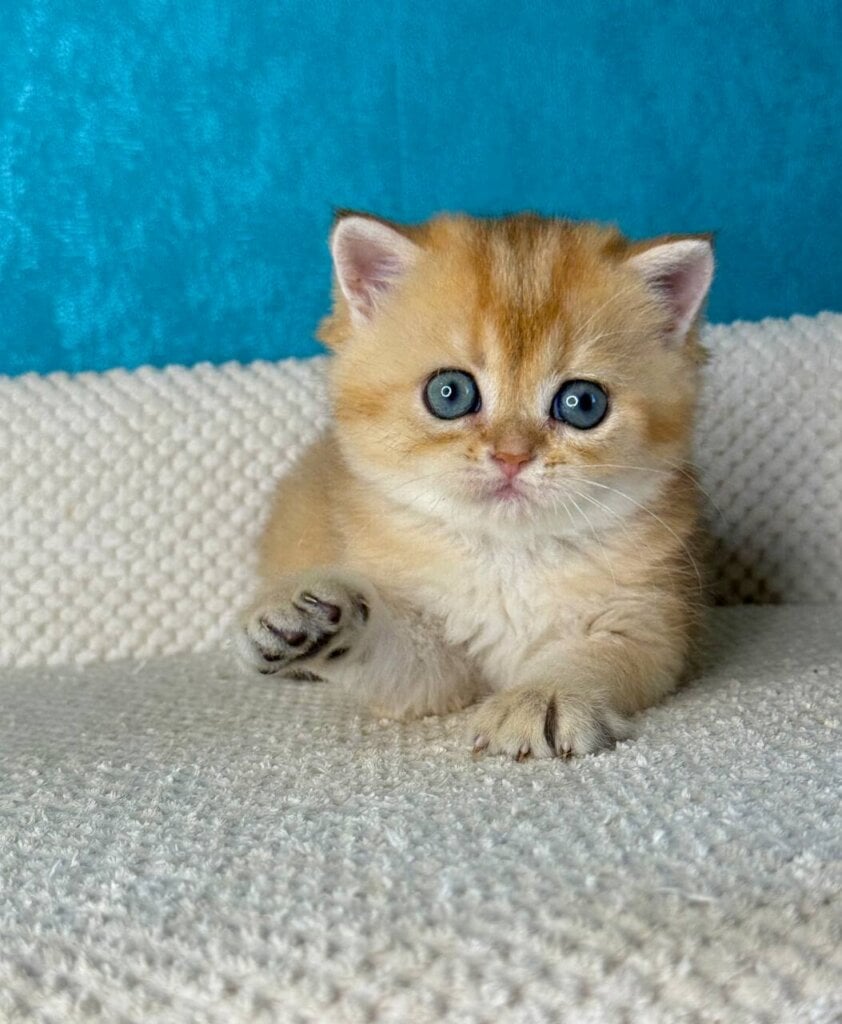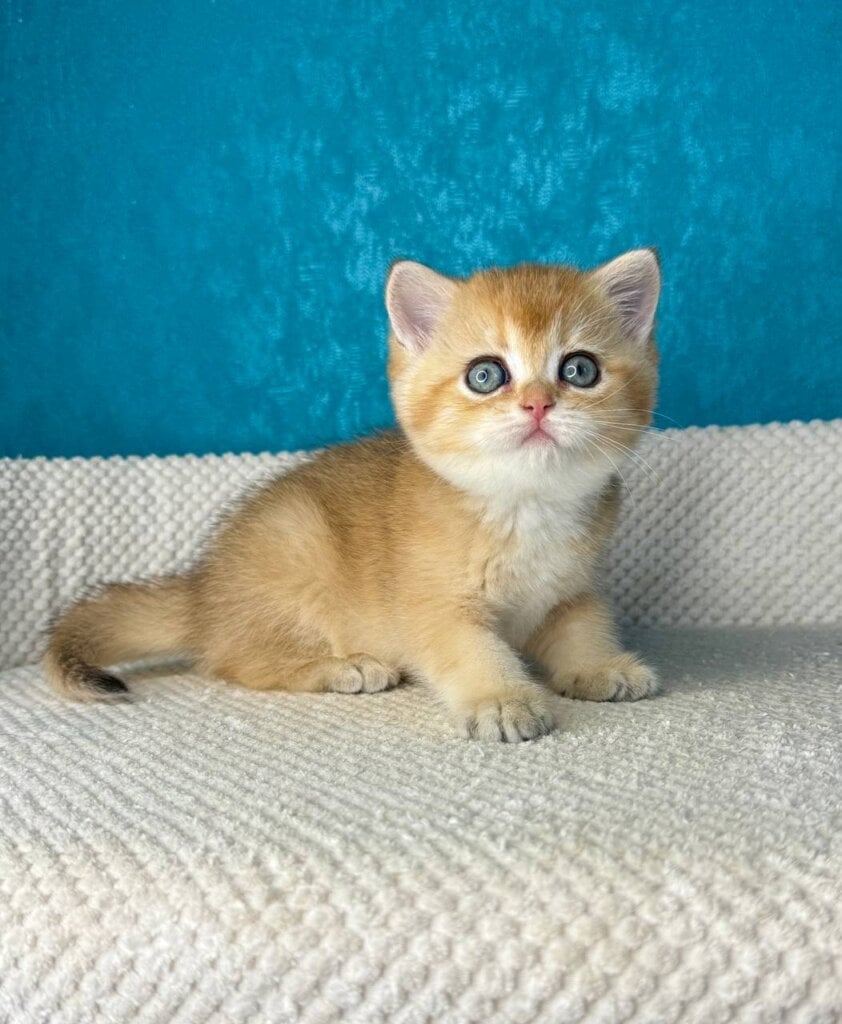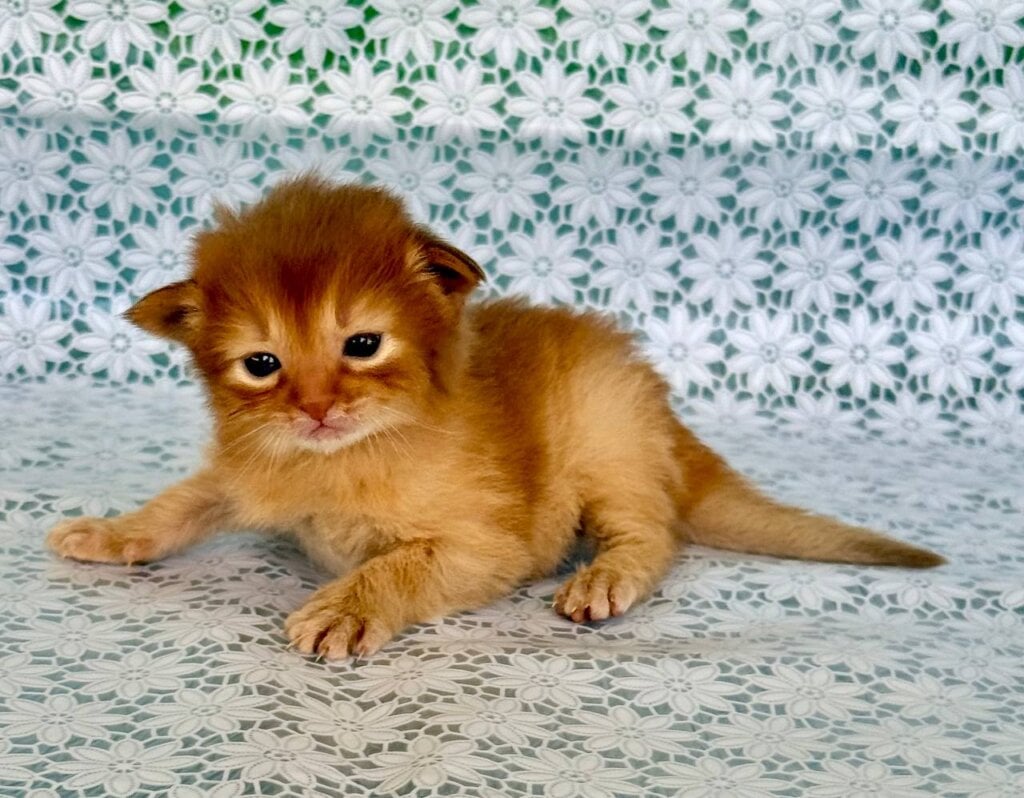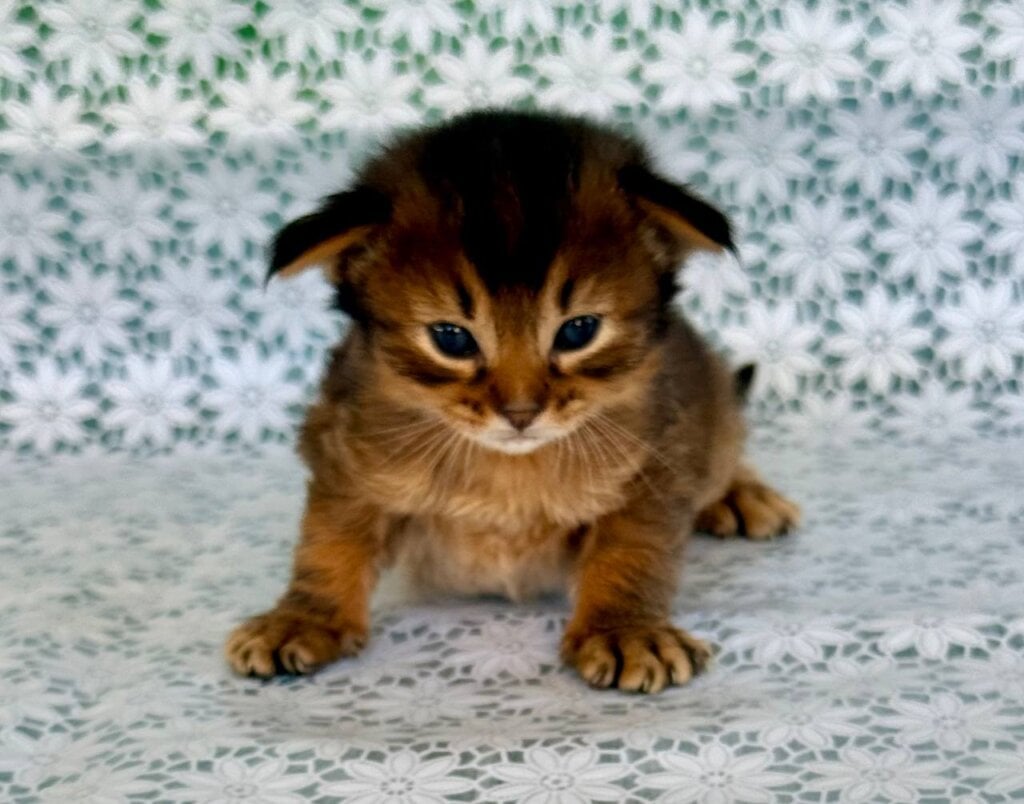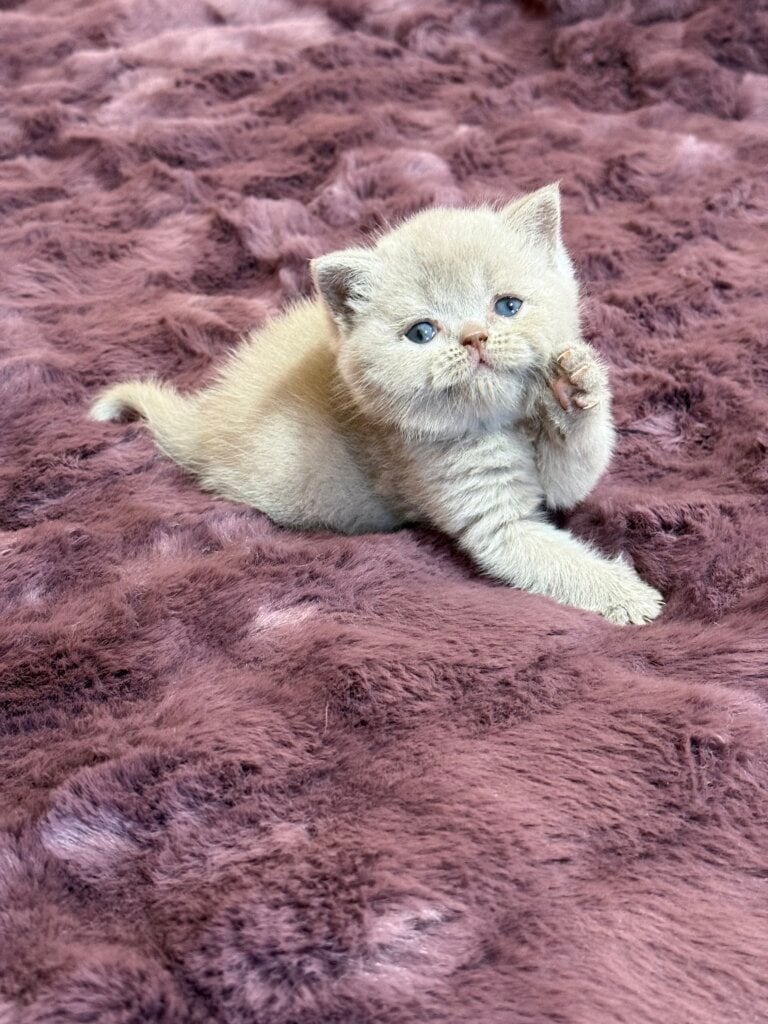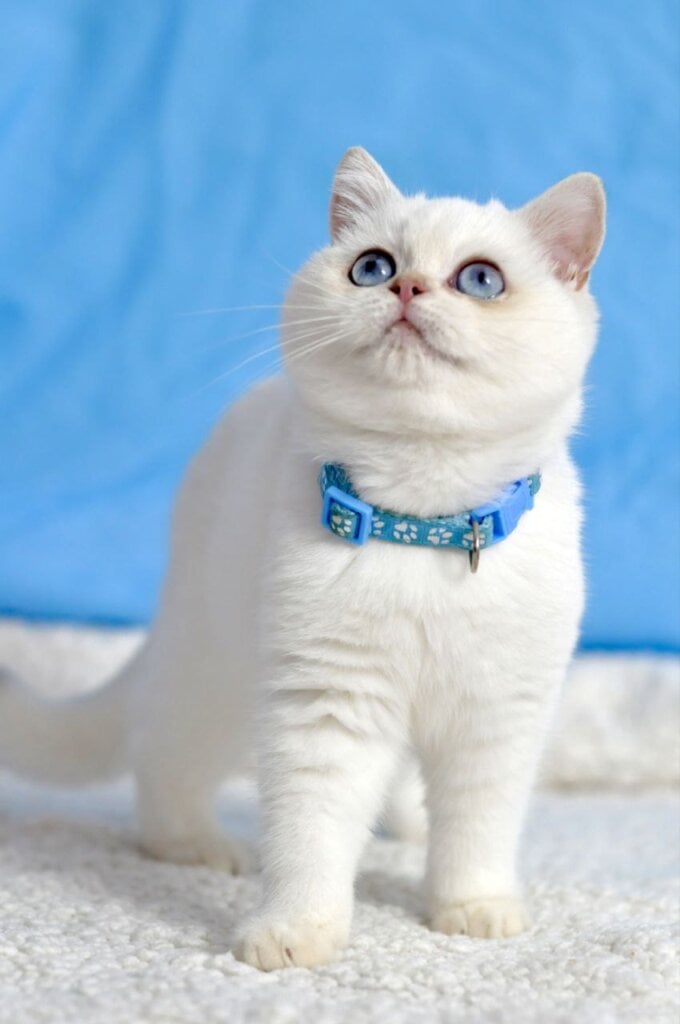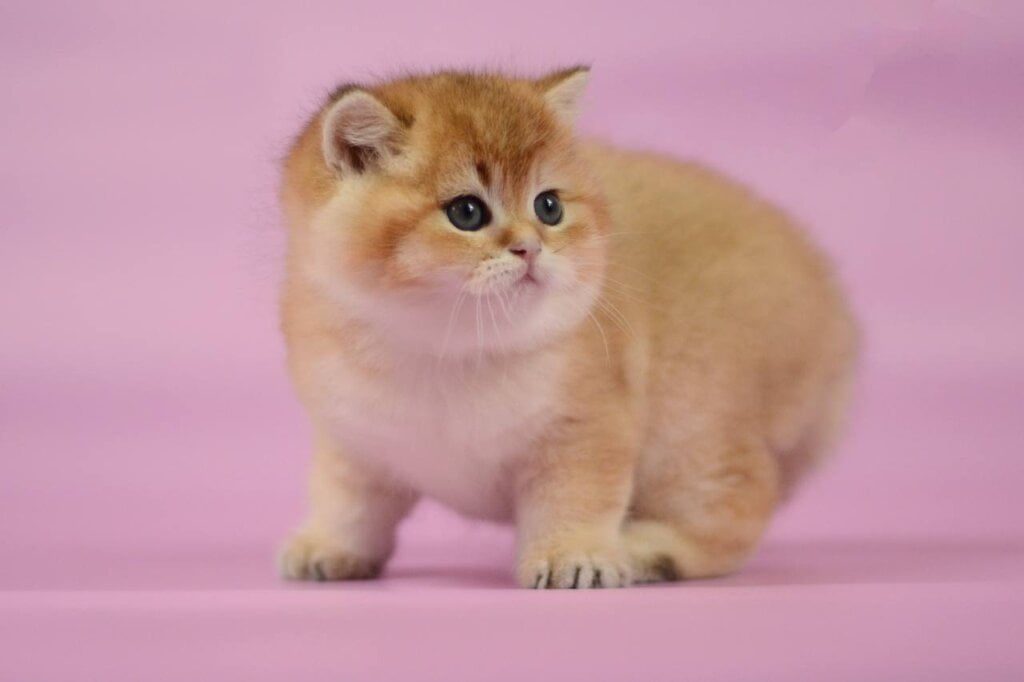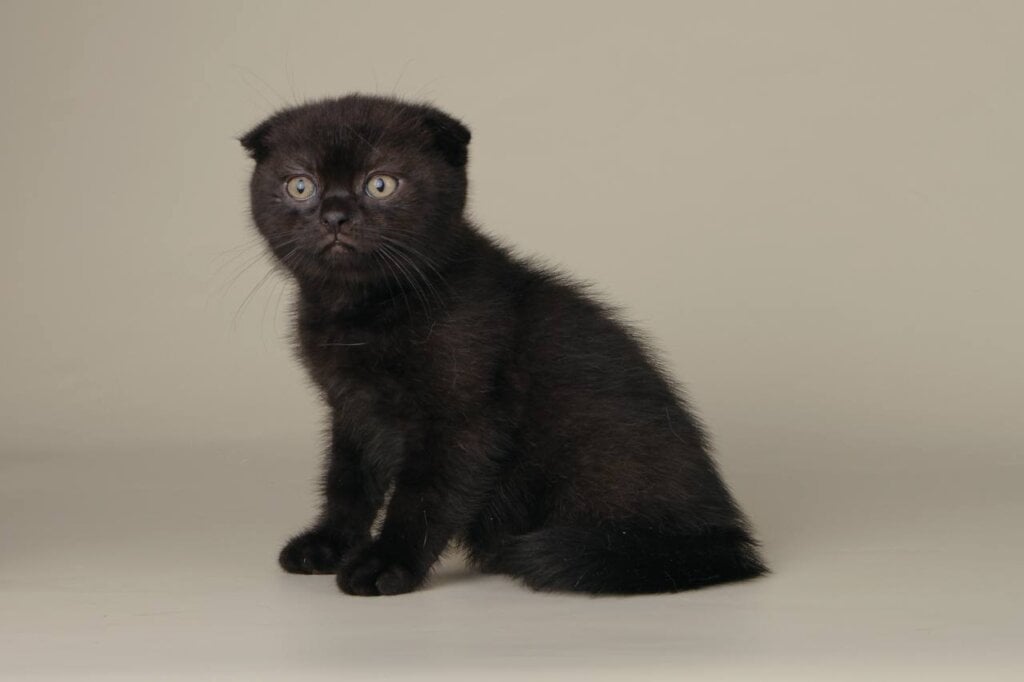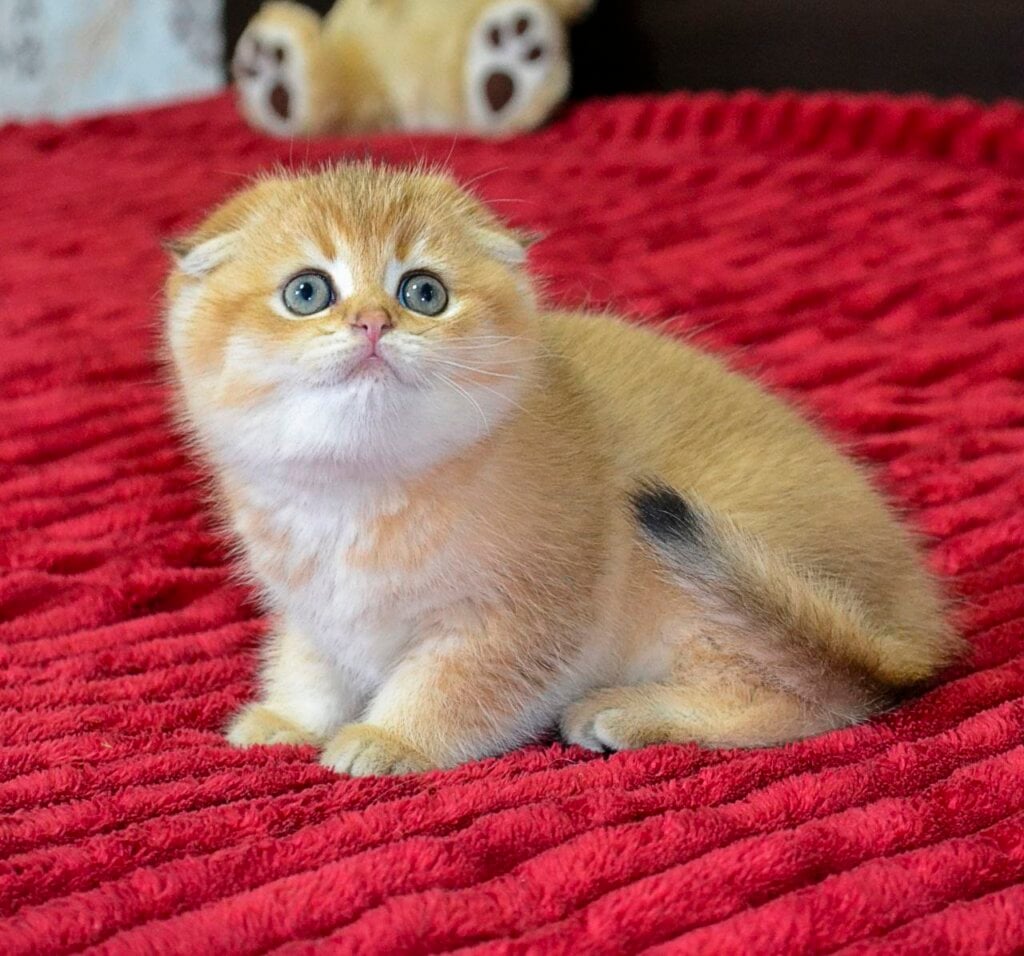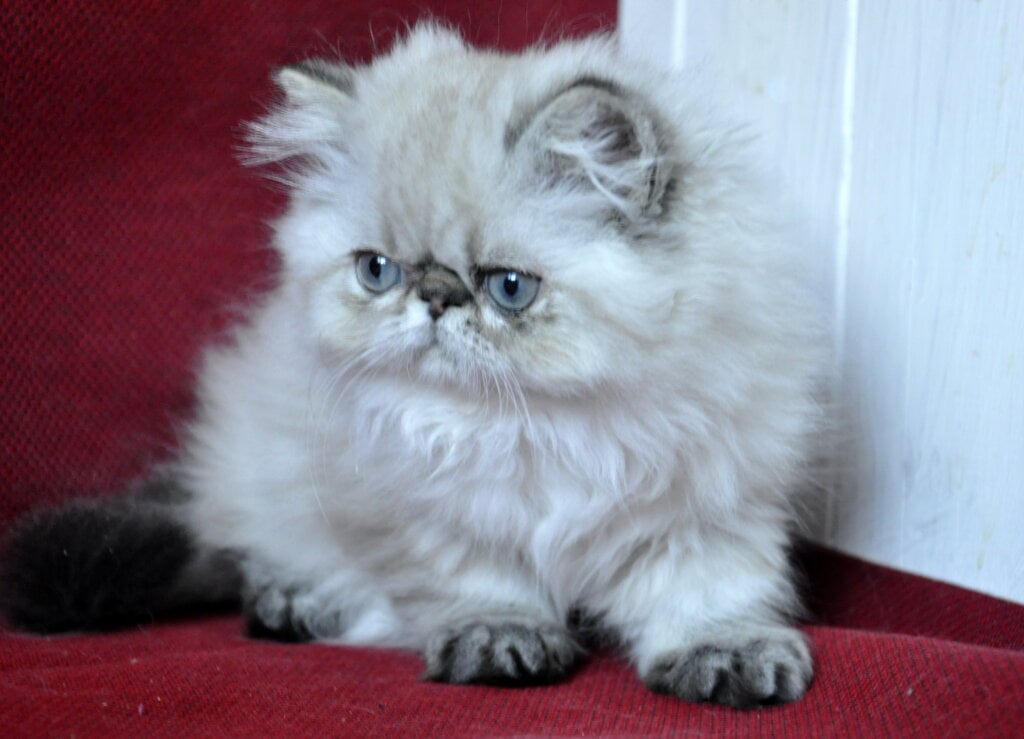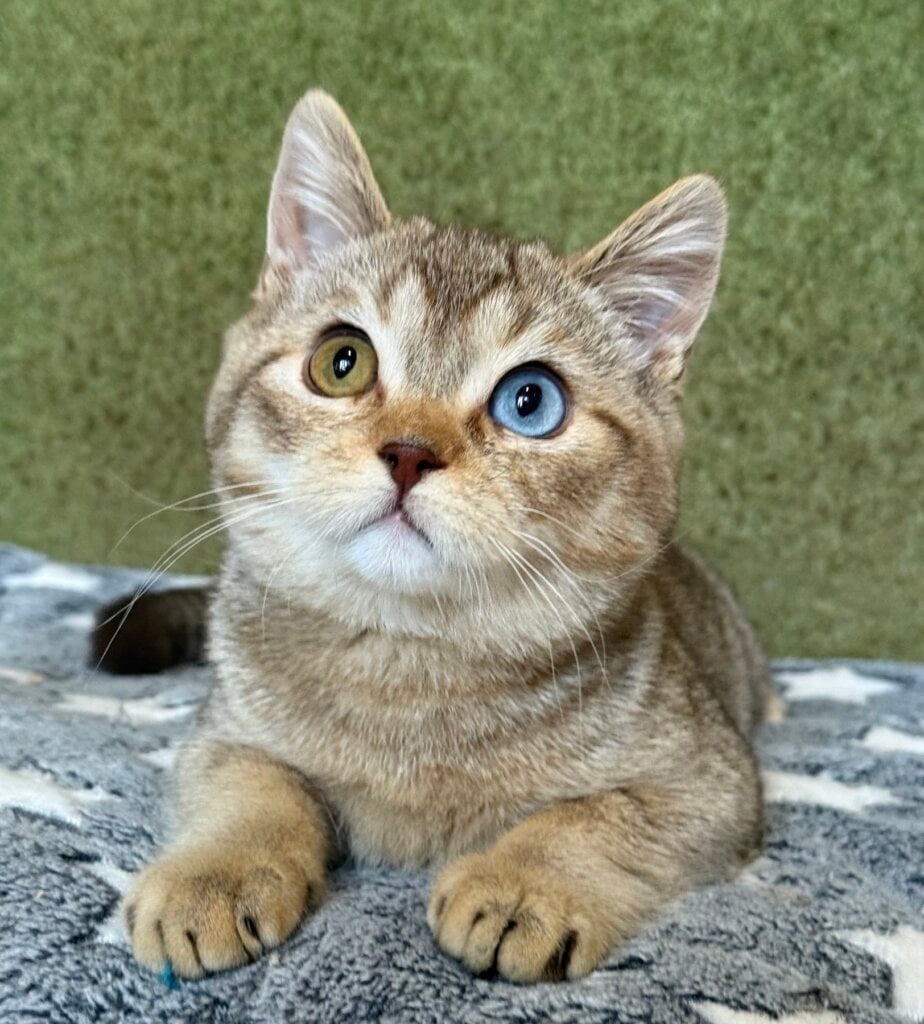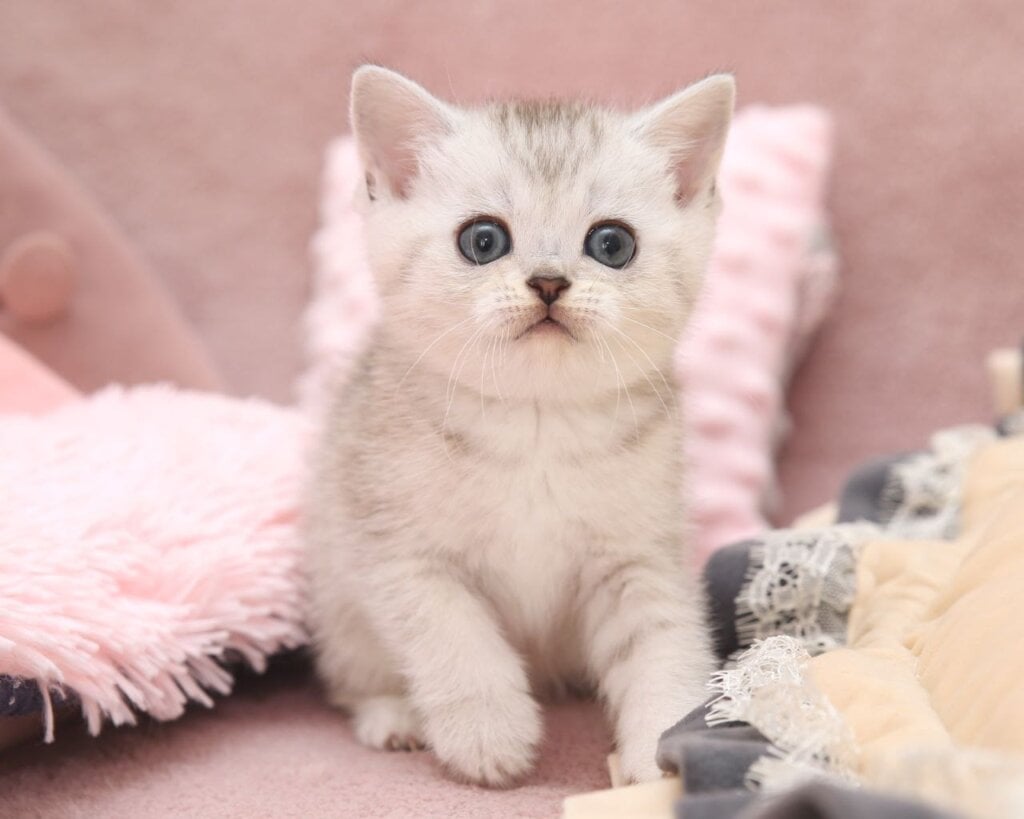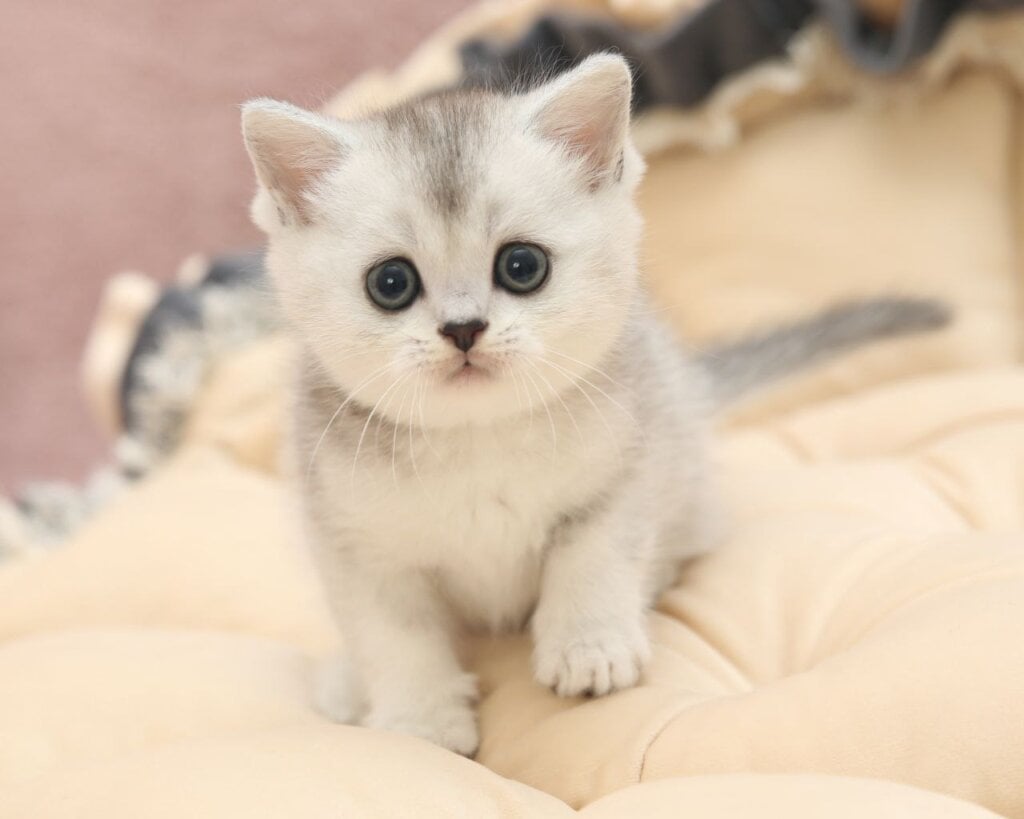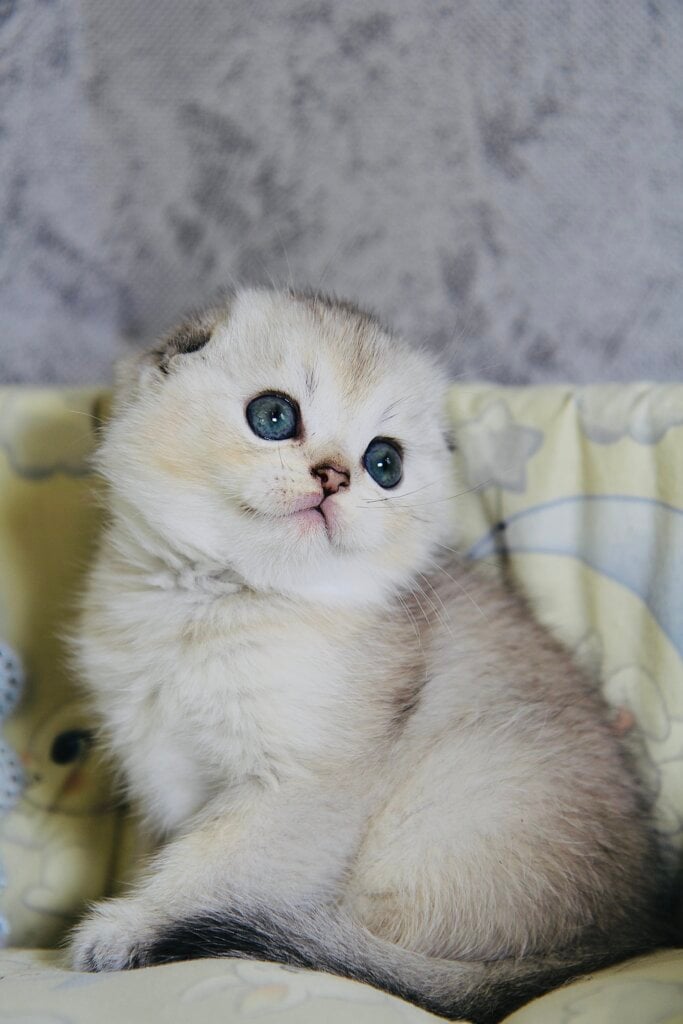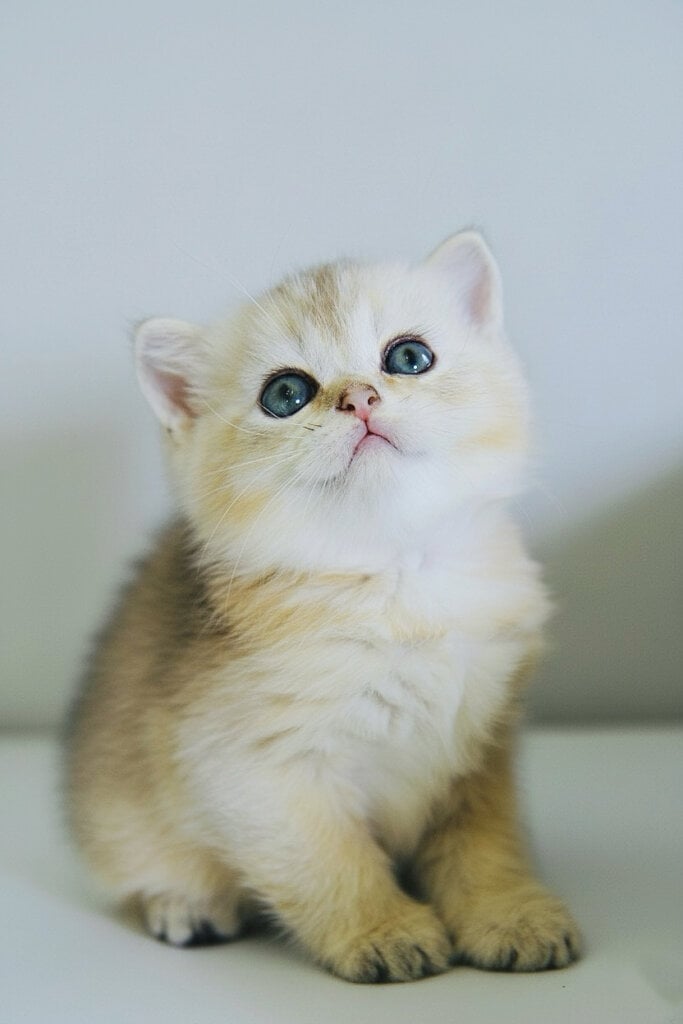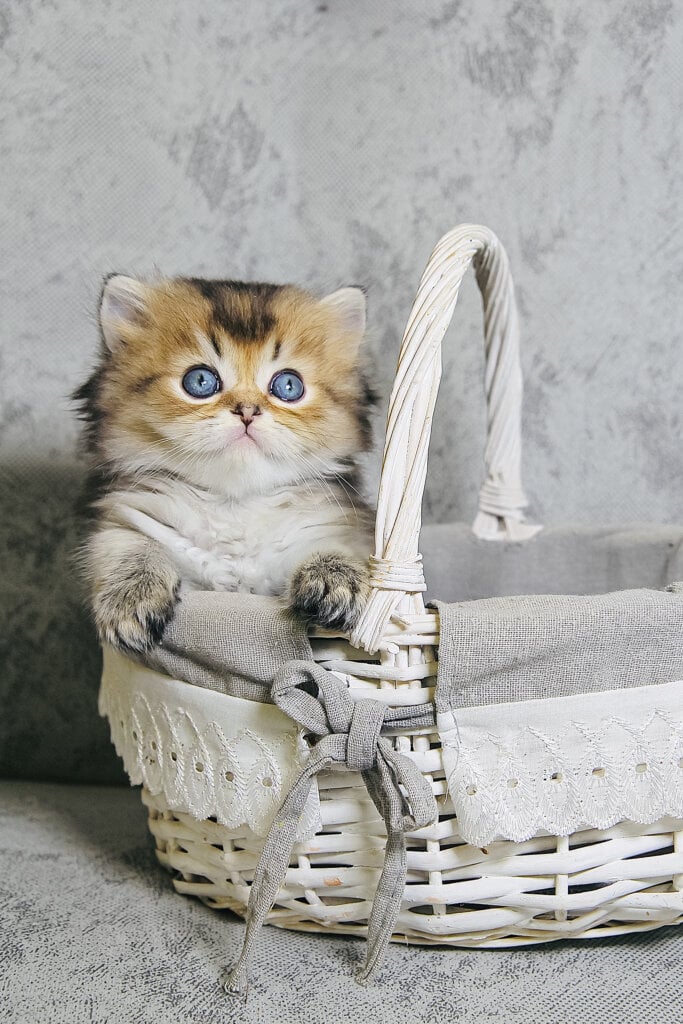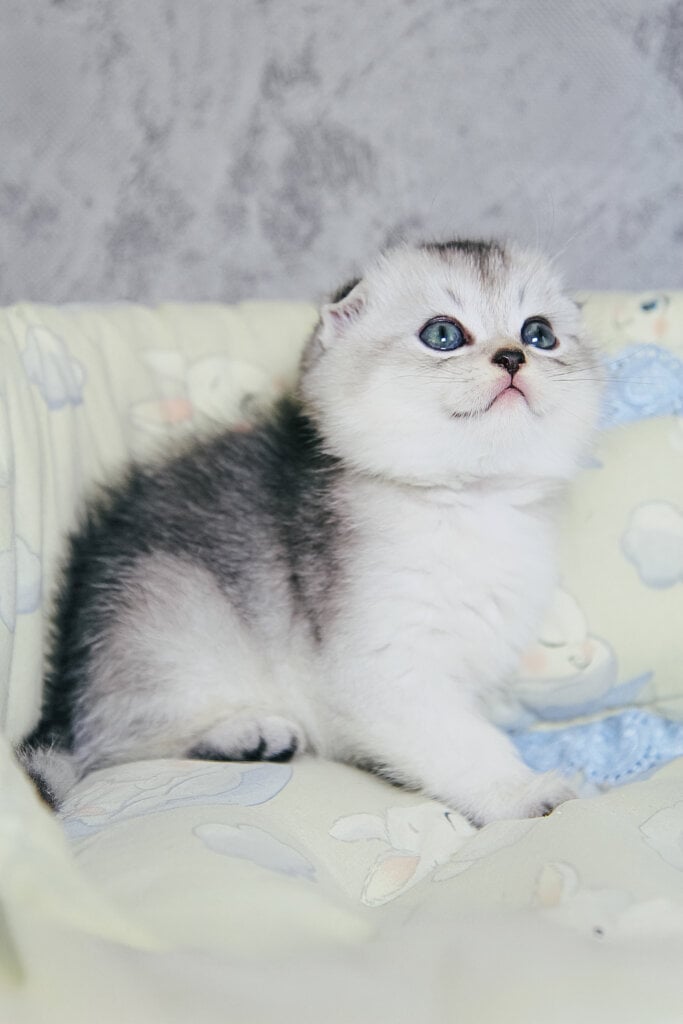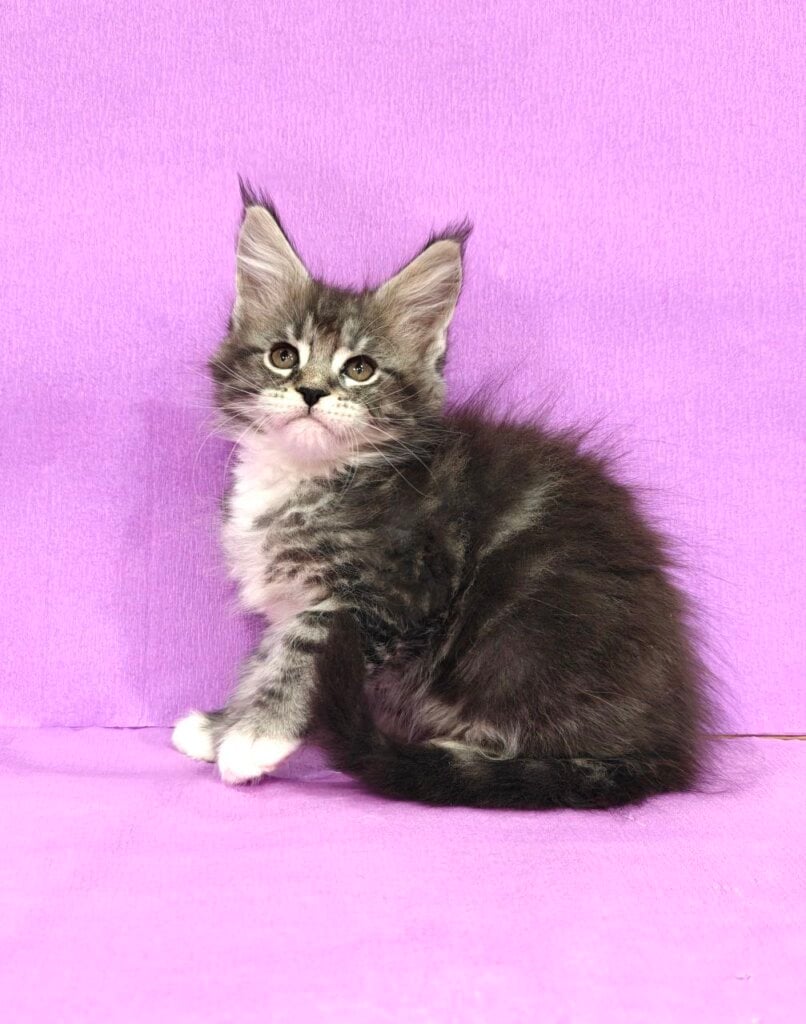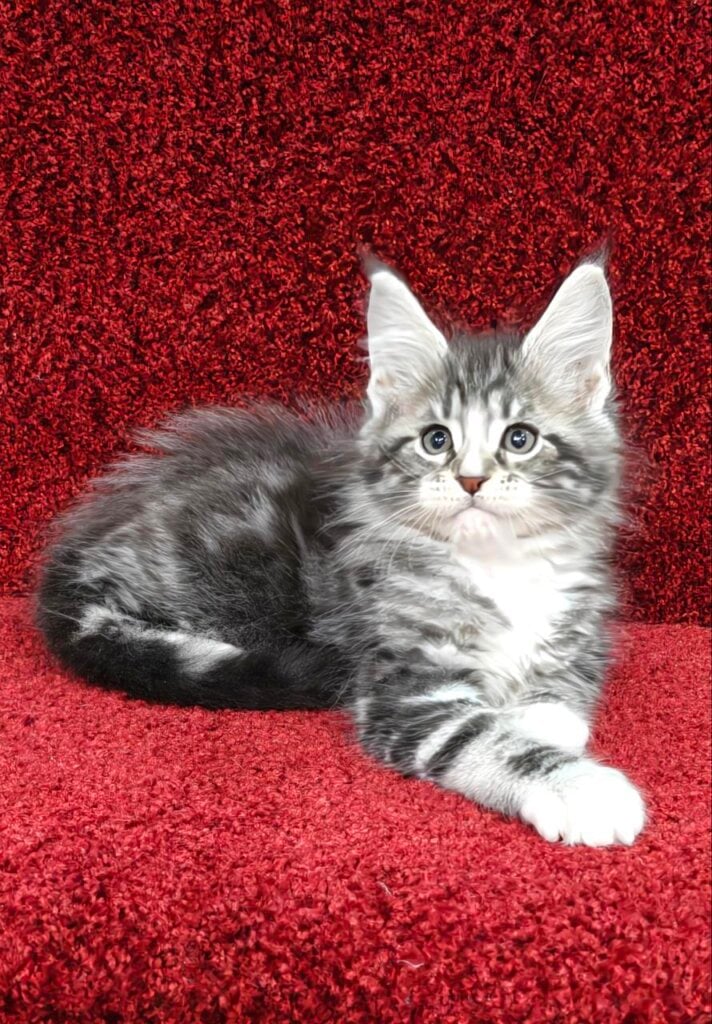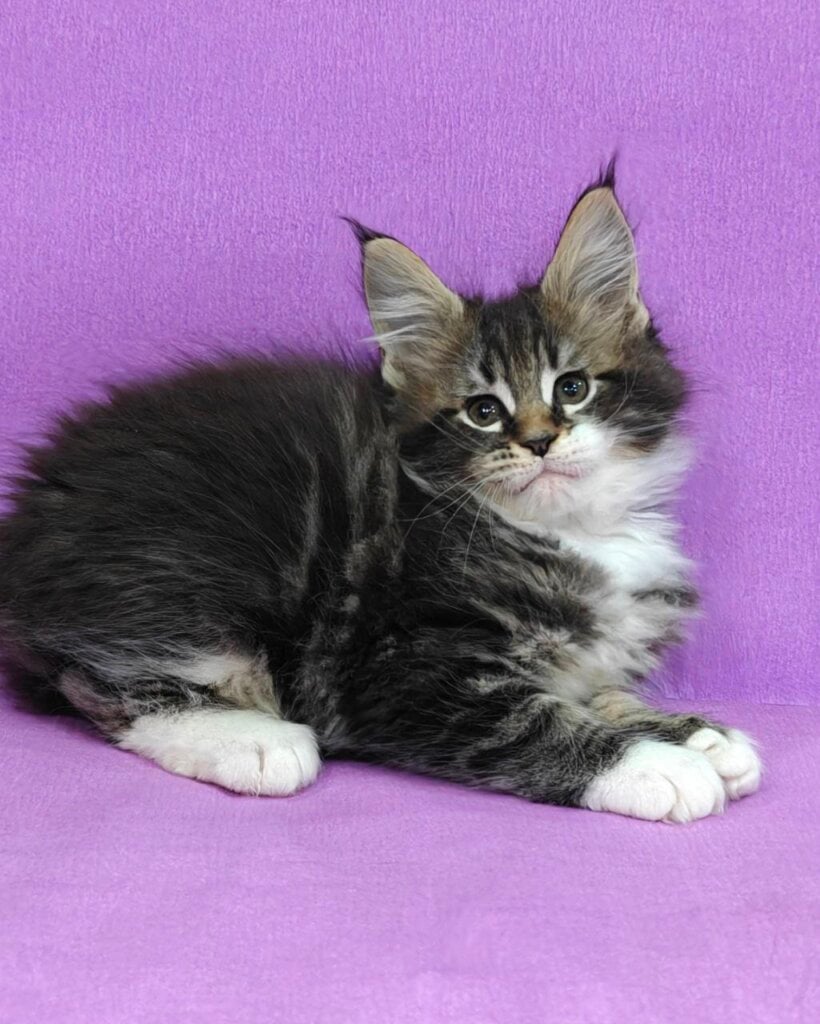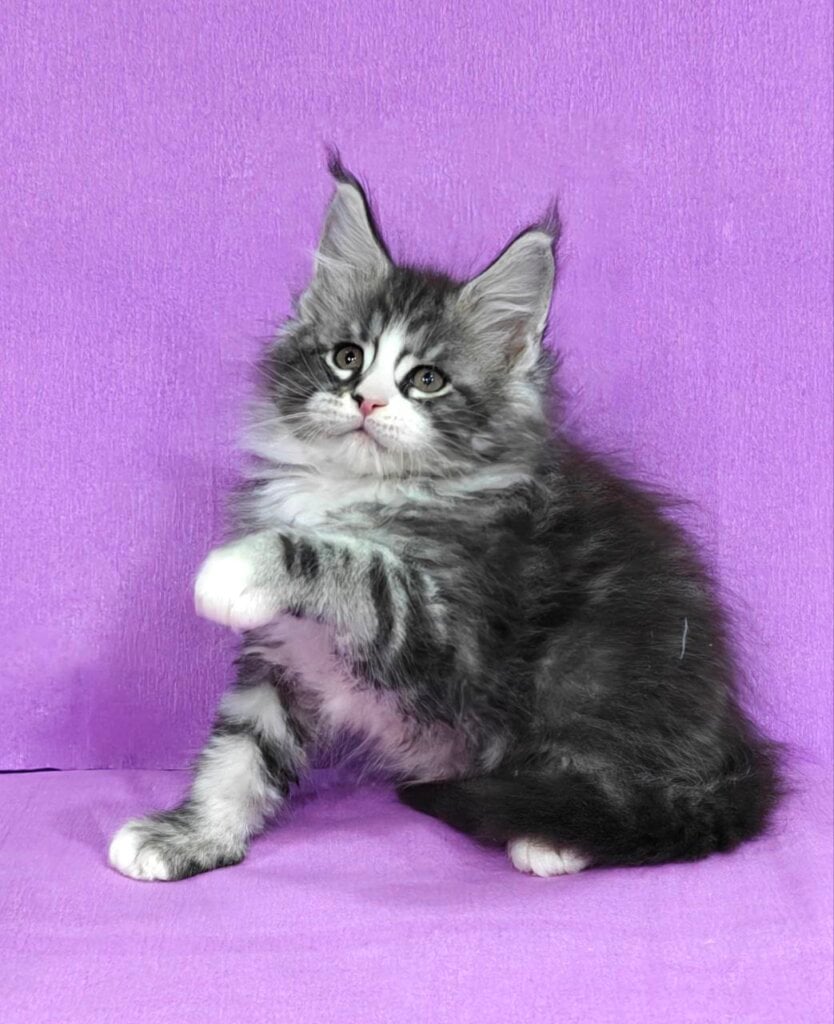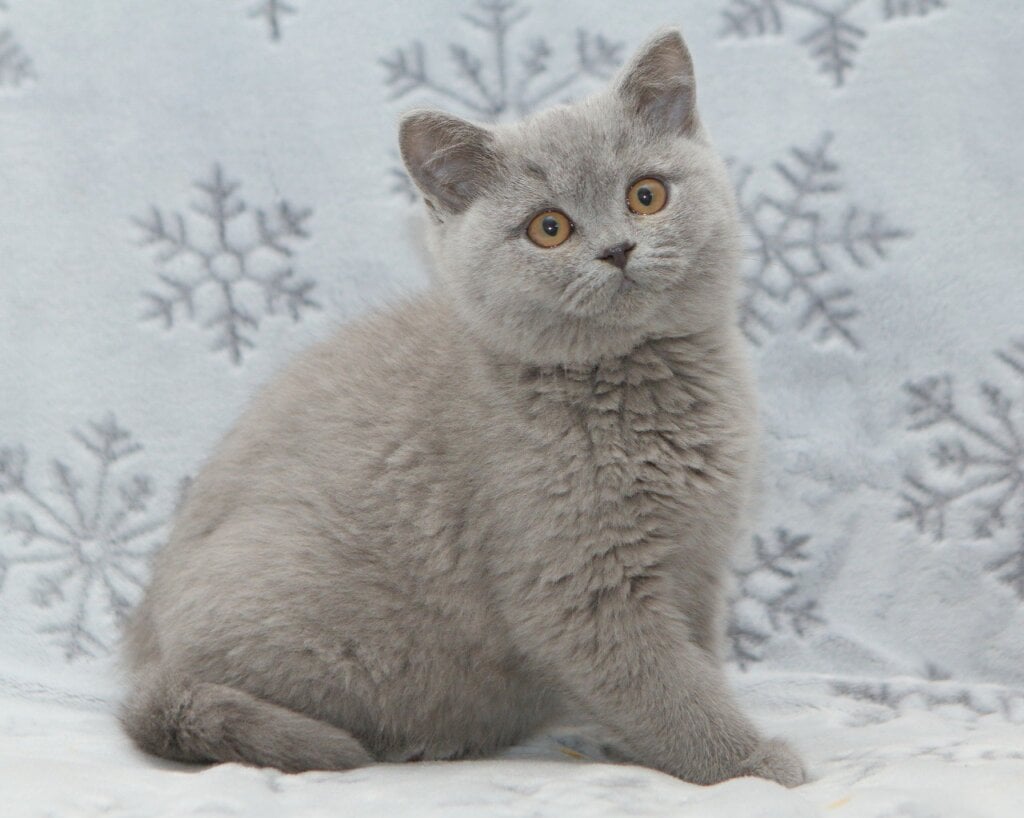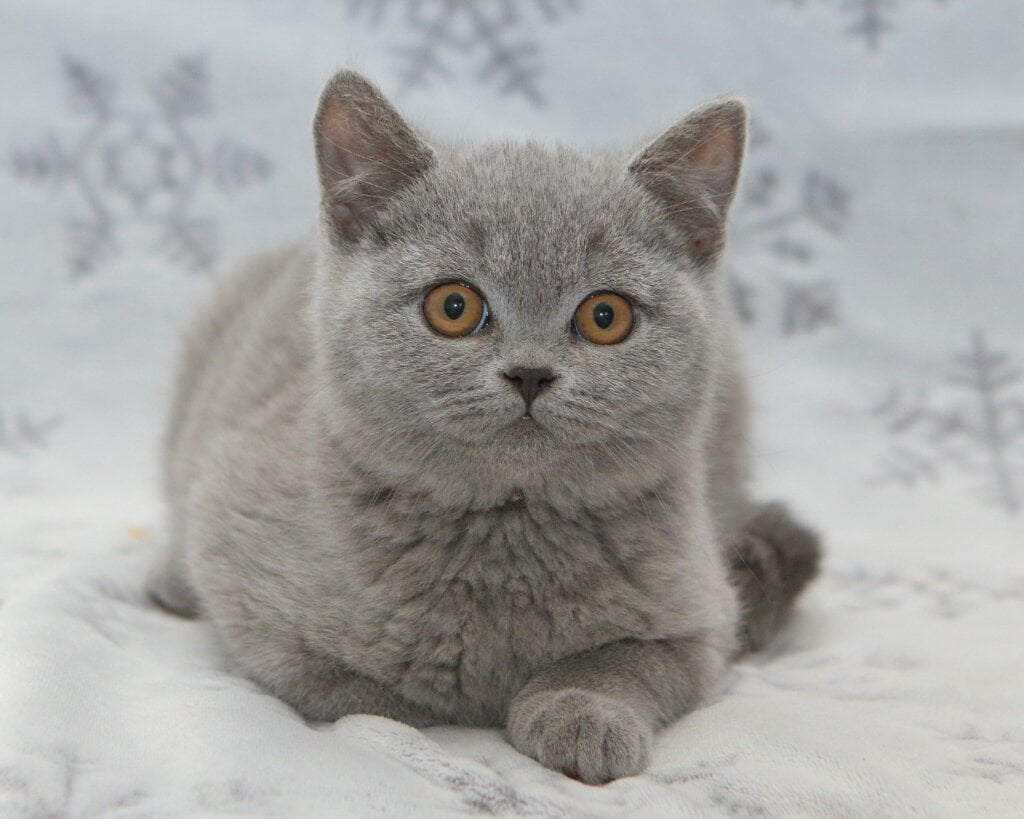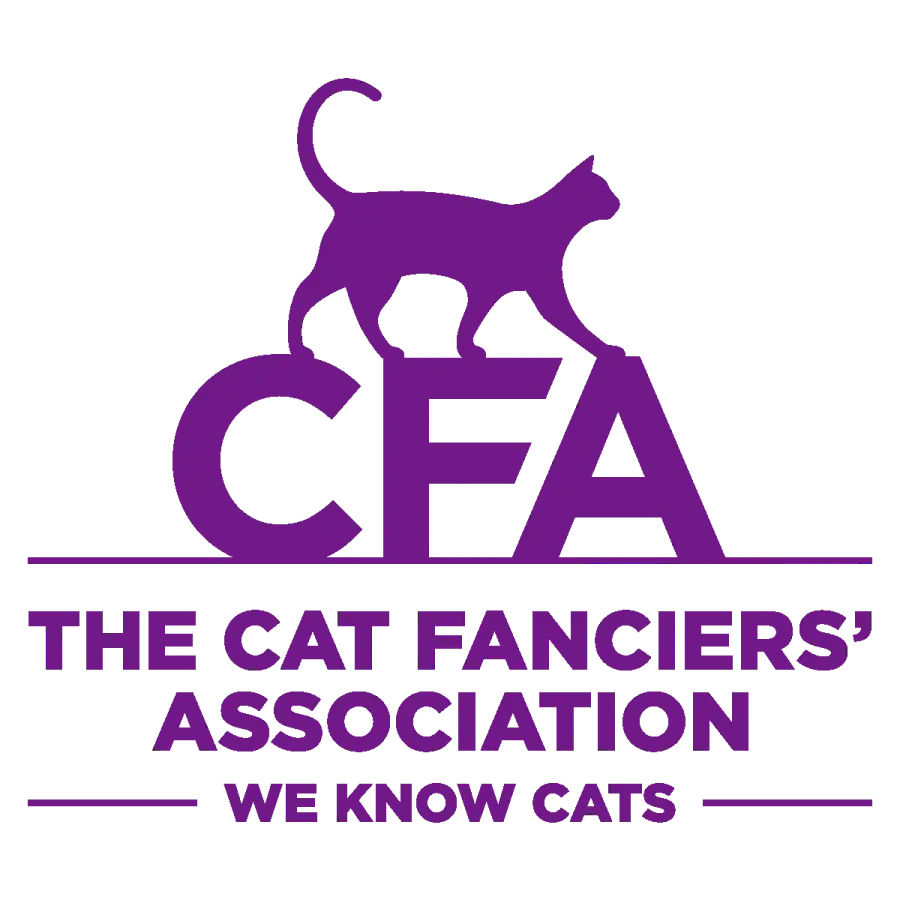Not all Scottish fold cats have folded ears. Not all Scottish Folds have folded ears, some have straight ears. The folded ear is genetic, but not every kitten inherits it. Folded and straight-eared Scottish Folds – both playful and gentle in nature. Understanding the distinction assist families choose the best fit their household and what makes each kitten special.
The Folded Ear Gene
The signature feature of Scottish Fold cats-those trademark ears-is the result of a single gene mutation called the trpv4 variant. This dominant gene alters the way cartilage forms, causing the ear to fold forward and downward. The same mutation is associated with osteochondrodysplasia, which affects bone and cartilage throughout the body. Knowing this gene is important for anyone considering adopting or breeding Scottish Folds, not just for appearances but for the feline’s long-term health.
- The trpv4 variant gene is dominant, so it only requires a single copy for the fold to manifest.
- This gene mutation can cause osteochondrodysplasia (OCD), which causes cartilage and bone issues.
- Folded ears can represent an increased risk for ear infections, exostosis (bone growth) and occasionally deafness.
- Kittens with the gene begin displaying folded ears when they’re 18 to 24 days old.
- In fact, some areas have outlawed breeding Scottish Folds because of animal cruelty issues.
1. The Mutation
A natural mutation in the trpv4 gene causes Scottish Folds’ distinctive appearance. This gene variation modifies cartilage development, causing the ears’ tips to fold forward. Not all Folded Ear cats with the mutation look alike–some are single-fold, others are double or triple-fold. The severity of the fold varies based on the expression of the mutated gene in individual kittens.
Breeding cats that both have this mutant gene multiplies the potential for serious health problems. Two folded ears mating tend to yield some really jagged bone and joint issues in kittens. Identifying the dangers and impact this mutation has on a cat’s health is important. Responsible breeders concentrate on maintaining the trait, but never to the detriment of the cat.
2. Inheritance Pattern
The folded ear gene is autosomally dominant. If a kitten receives one copy of the mutated gene from either parent, it will exhibit the ear fold. Heterozygous cats (one copy of the gene) usually have the folded ears, but are still susceptible to OCD. If a cat receives two copies (homozygous), the health risks escalate, commonly culminating in lethal deformities.
If you breed a fold with a straight-eared cat, approximately 50% of the kittens will have folded ears. The remainder will not. This ratio helps breeders steer clear of generating all fold kittens, which could increase the health dangers even more. Handling this diversity is the key in breeding programs to minimizing genetic diseases.
3. Kitten Development
Scottish Fold kittens enter this world with ears that stand up straight. Folds begin to develop between 18 and 24 days if the kitten inherited the gene. Breeders and owners should pay attention to changes in ear shape, as it allows them to identify health issues early on.
Parental genes have alot to so with which kittens get folded ears. If both parents are Folds, more kittens will suffer catastrophic health issues. Early socialization and gentle handling during this stage keep kittens happy and healthy.
4. Straight-Eared Folds
Straight-eared folds are Scottish Folds who appear to be normal cats but still possess the fold gene. They don’t exhibit folded ears but are able to transmit the gene to their offspring. Incorporating these cats into breeding programs maintains genetic diversity and reduces the risk of health problems.
These straight-eared cats command a premium in the stud books. They assist in maintaining the breed healthy.
They provide more mix-and-match options and reduce the chance of OCD.
They matter for the breed’s future.
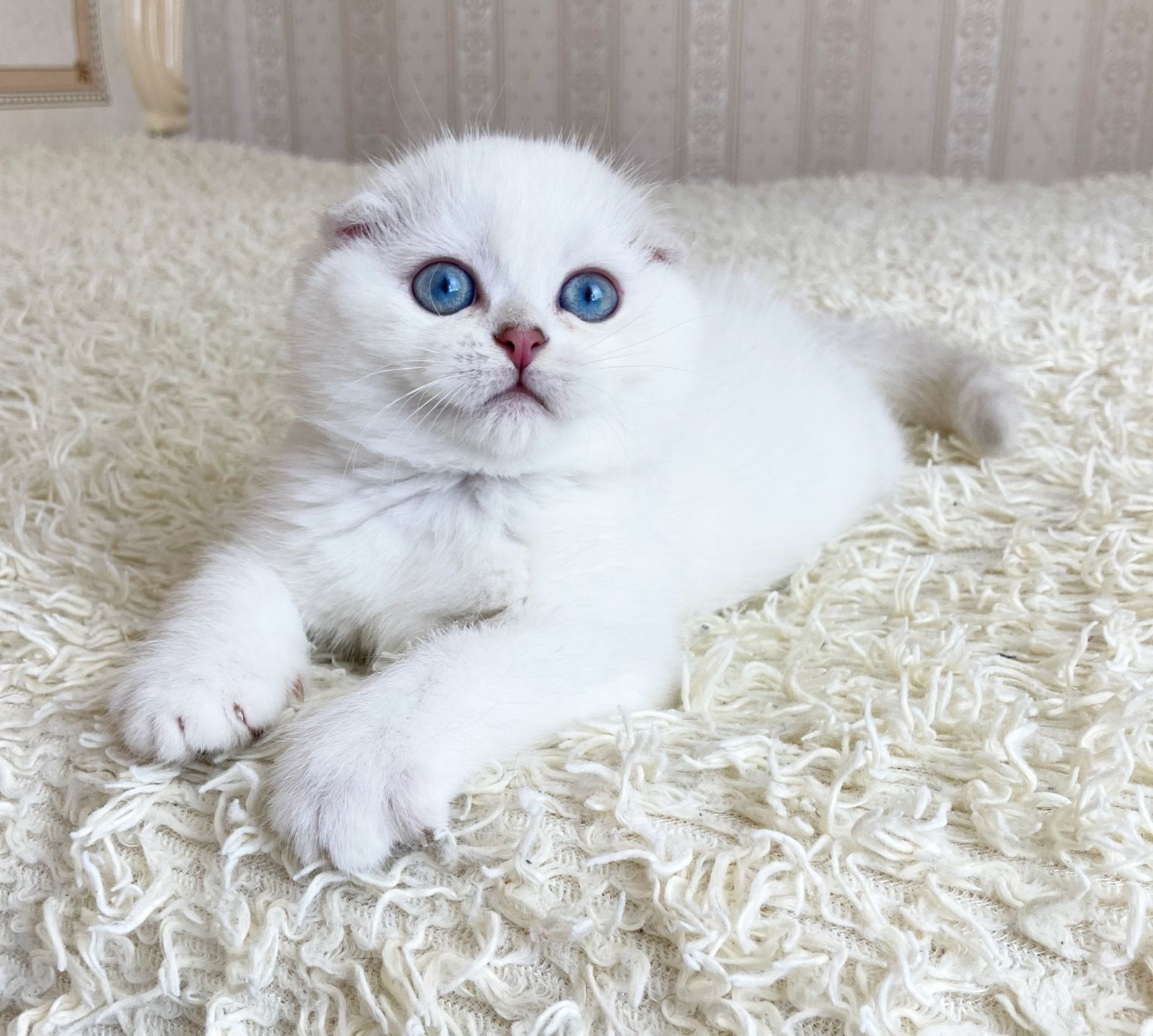
Variations in Ear Folds
Scottish Fold cats present a variety of ear folds caused by a dominant cartilage-altering gene. Not all kittens of this breed have folded ears, in fact, a large number have straight ears and are known as Scottish Straights. Degree of folding – from mild fold to deep, pressed against the head appearance. This distinction is not merely cosmetic, but can impact health and breeding. Recognizing these variations is vital to responsible breeding and the health of these cats.
| Fold Type | Fold Description | How Often Seen | Health Notes |
|---|---|---|---|
| Single Fold | Light forward bend, loose | Common | Lower risk of cartilage issues |
| Double Fold | Noticeable tighter fold | Moderate | Medium risk for cartilage and bone problems |
| Triple Fold | Very tight, flat to the head | Rare | High risk-severe cartilage and bone deformities |
Single Fold
Single fold Scottish Folds have ears that have a slight bend. The fold is soft, and makes the ear flop forward but not hug the head. This is the type most often in the breed. In the early days, various folds accounted for approximately half of all kittens, however, single folds are noted for their moderate appearance.
Single folds are unlikely to have the extreme health problems associated with the fold gene. Because the fold is not severe, the cartilage is still quite pliable. This decreases the risk of joint pain, stiffness or bone deformities. Health checks are still necessary, due to this gene for folding can still be risk.
Breeders seeking single fold traits typically breed a fold cat (Fd/fd) with a straight-eared mate (fd/fd). This decreases the possibility of fold genes coming together (Fd/Fd) which can be deadly.
Fans adore single fold cats for their adorable, approachable appearance. That soft bend imparts a sweet expression, meaning they make wonderful family companions.
Double Fold
Double fold ears fold more sharply than singles, nestling closer to the head. The fold creates a very distinctive crease, which gives the cat an ‘alert’ appearance. This one is uncommon and requires some selective breeding.
Breeding double folds is a pain. It requires expertise to not breed two fold-ear parents since this can cause painful bone issues. Responsible breeders always mate a fold with a straight to minimize health risks, and they test for joint health.
These cats can be more susceptible to cartilage issues. The tighter the fold, the more likely the cat might have osteochondrodysplasia, a genetic bone disorder present in the breed.
Double folds are favored by breeders and collectors due to their dramatic appearance and rarity.
Triple Fold
Triple fold Scottish Folds have ears that lie almost flat against the head, with 3 distinct folds. This extreme fold is uncommon and generally observed in cats who have two copies of the fold gene (Fd/Fd). Their appearance is striking, providing a timeless “owl-eyed” visage.
This beauty does not come for free. Triple folds are a major risk for severe bone and cartilage complications. These felines can experience agonizing joint deformities, limping, and even premature arthritis. The mutation behind both folded ears and osteochondrodysplasia was isolated in 2016, tying together the connection between severe folding and health risks.
Most responsible breeders don’t breed for triple folds. They opt for health not beauty, striving to avoid pain in their litters.
While the triple fold’s striking appearance attracts notice, it is paramount to make breeding decisions that prioritize the cat’s health.
The Unseen Health Cost
Scottish Fold cats captivate many with their adorable folded ears, however this hallmark feature carries an unseen health expense that all prospective owners need to be aware of. That very same genetic mutation that causes the ear fold may bring a host of health issues, many of which are painful and lifelong. These problems don’t always present themselves in young kittens, but they can emerge early and have life threatening consequences for a cat’s health.
- Osteochondrodysplasia (abnormal bone and cartilage growth)
- Joint pain and arthritis
- Mobility issues and limb deformities
- Tail stiffness and spinal abnormalities
- Chronic pain
- Increased need for medical care
- Risk of behavioral issues if declawed
Osteochondrodysplasia
Osteochondrodysplasia associated with the same mutation that produces folded ears in Scottish Folds. This condition impairs cartilage development and the symptoms can present as early as seven weeks of age. As well as altering the appearance of the ears, it can cause thick, non-floppy tails, shortened, rigid legs and limb deformities. These transformations aren’t merely aesthetic-they can damage the cat’s quality of life, inflicting pain and limiting mobility. Good breeders utilize genetic testing to identify carriers and avoid breeding two cats with the fold gene, which can exacerbate these issues.
| Symptom | Description |
|---|---|
| Joint pain | Soreness or swelling in the legs or tail |
| Limb deformities | Bent or shortened legs |
| Arthritis | Swollen, painful joints |
| Tail stiffness | Thick, inflexible tail |
| Spinal issues | Curved or abnormal spine |
Joint Pain
Joint pain is among the most frequent issues in Scottish Fold cats. The same cartilage defect that causes their ears to fold down, causes their joints to be fragile. Eventually, this can result in arthritis, sore legs and difficulty walking or jumping. Other cats may become more sedentary or shy away from play, restricting their joy and causing them to pack on pounds. Pain management is crucial-medication, physical therapy, and routine checkups can significantly contribute to their comfort. Owners should observe for limping or a change in movement as these could be indicators of pain that requires attention.
Mobility Issues
Almost all Scottish Fold cats begin to have mobility issues as they age, as a result of bone and joint changes from their genetic condition. These issues can impact everyday tasks such as stair climbing, grooming, or even accessing the litter box. A secure home with ramps, snuggly beds and convenient access to food and water makes these cats thrive. Veterinary care is necessary to detect minor changes before they become severe and to assist with pain or rigidity.
Tail Stiffness
Tail stiffness is common in Scottish Folds with serious bone issues. A thick, rigid tail is more than a tail-it’s frequently an indication that the cat has pain or some other joint pathology. Tail watching and mobility is crucial, as alterations can indicate more significant health issues. Treatments might involve pain management and light stretches to maintain the tail’s flexibility.
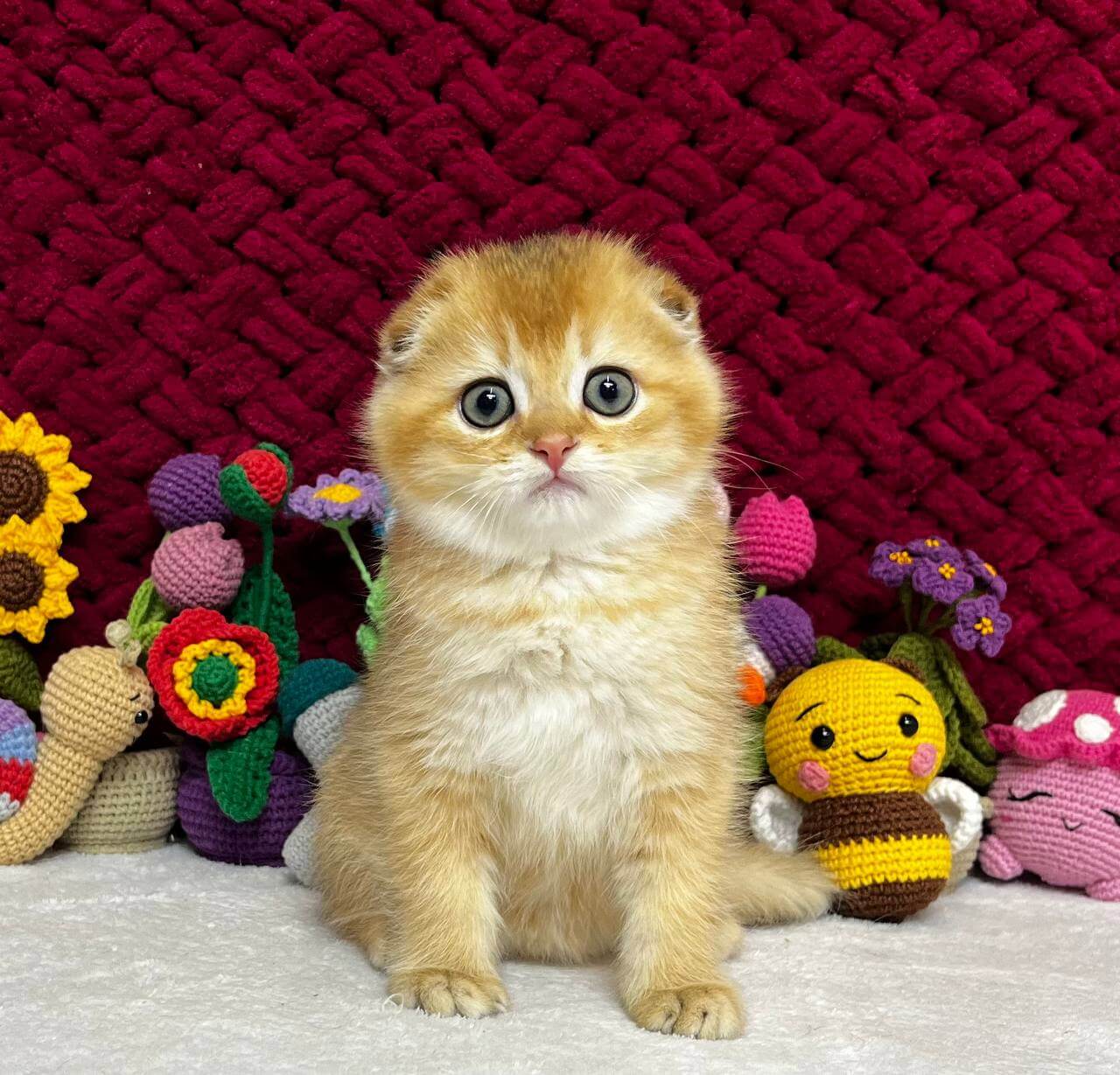
Responsible Breeding Practices
Responsible breeding practices means breeders operate with care, expertise, and a conscientiousness toward the cats they work with. For Scottish Fold cats, it’s about more than just the novelty appearance. The Fold gene that provides these cats with their iconic folded ears comes at the risk of developing serious health problems, such as osteochondrodysplasia. Responsible breeders care about the well-being and joy of their cats – not just how they look. They adhere to advice from major registries and select pairs for breeding responsibly to maintain the breed’s health.
The Essential Cross
That’s right: Responsible Breeding Practices – breeding Scottish Folds to straight-eared cats is not a tradition-it’s the most important part of a healthy line. Crosses with genetically-checked BSH or, less commonly, Scottish Shorthairs, help maintain genetic diversity robust. This reduces the likelihood of health issues associated with inbreeding, in particular osteochondrodysplasia, which all Fold cats are susceptible to in varying degrees. If both parents have the Fold gene, there’s a 25% chance of having kittens with two copies of the gene (homozygous Folds), which tends to cause devastating, painful joint disease. By using BSH as outcrosses, we enhance the gene pool and mitigate the risk of inherited conditions. Breeders need to research pedigrees and genetic test results to select pairs that don’t compound the Fold gene. A more expanded gene pool translates to healthier cats for generations to follow, with less inherited issues.
Genetic Screening
Genetic screening has become an invaluable tool for any responsible breeder. Screening aids identify which cats are carriers of the Fold gene and can test for other silent genetic threats. By identifying carrier cats, breeders can make wise decisions and steer clear of matings that would pass on double-dose health issues. Such care ensures the kittens are less prone to painful joint diseases or other hereditary disorders. When breeders share these results with buyers, it fosters trust and demonstrates a breeder’s dedication to transparency. It’s not sufficient to merely speculate-through science breeders can do right by the cats themselves and the families who will cherish them.
Ethical Red Flags
Prospective owners must be on the lookout for red flags when seeking out a Scottish Fold kitten. Steer clear of breeders who breed exclusively for appearance or exotic traits, because that can indicate they are disregarding health concerns. It’s a red flag if a breeder won’t share health or genetic test results. Responsible breeders provide copies of any and all relevant paperwork and are honest and transparent about potential health concerns. Be sure to look for membership with major cat registries, which insist that breeders adhere to health and welfare standards.
Beyond the Fold: A Personal View
Scottish Fold cats can seduce you with their adorable faces and distinctive ears, but there’s a little more than that to learn before inviting one inside. Their appearance is just the beginning-having a Scottish Fold demands consideration, attention, and lifelong affection. These kitties are friendly, fun and usually attach tight to one individual. Their single, double, or triple folded ears can signify more than just a cute appearance. Every fold type alters the position their ears lay, but not every Scottish Fold has folded ears – some have straight ears as well. Their rugged outdoorsman personality and enthusiasm for sports is icing on the cake. It’s critical to consider their long-term care and comfort past the surface.
The Welfare Debate
There’s a controversy in the cat world in relation to Scottish Folds ears, primarily because of their ear fold gene. This gene folds not only the ears, but can cause cartilage and joint issues, potentially painful and hindering mobility in older cats. Some breeders and cat enthusiasts claim that with cautious breeding, these risks can be reduced, whereas others claim the risk is too high and breeding should cease altogether.
Because of these concerns, Scottish Folds are not even accepted as a breed in Scotland. A number of animal welfare organisations feel that breeding for folded ears alone is enough to cause suffering. It has the argument making a lot of people reconsider what’s important – how a cat looks or how it feels. With an increasing emphasis on animal welfare, more breeders are placing health and comfort above all others, employing rigorous health screenings and honest communications with purchasers.
A Life of Discomfort?
Many Scottish Folds have to endure daily pain from issues associated with their folded ears. Owners could observe their cat limping, less active or sensitive to touch. Knowing these signs and acting quickly is crucial to helping your cat live well.
Life with a Scottish Fold demands patience and a gentle hand, particularly if health issues arise. Little modifications-such as soft bedding, ramps to climb and regular vet check-ups-can make a significant impact. When pain is controlled and comfort prioritized, these kitties can still live life and create close connections with their families.
Choosing Compassion
Opting for a Scottish Fold should always be grounded in concern. Adopting from shelters or rescues that prioritize cat health is a good move. For those who do opt to purchase, locating breeders that play by hard, ethical rules and do health testing is crucial.
Educating yourself on the breed’s needs and health concerns assists families in making informed decisions. Choosing empathy is about thinking deep about the feline’s total-being, not just its appearance.
Living With a Scottish Fold
Living with a Scottish Fold is not just living with a pretty face. These cats are medium-sized – typically between six and 13 pounds – and tend to live anywhere from 12 to 15 years or more with quality nutrition, daily play, and a serene household. They enjoy cuddling up next to their humans and may even trail you around the house. If you’re away a lot, this breed may not be for you, as these cats don’t enjoy extended solitude.
Scottish Folds are quite famous for their svelte and tender manners. Many have a playful side and will chase toys, climb trees or snuggle on your lap when you unwind. They do fine in silent homes or bustling families as long as they receive ample time and attention from their humans. They’re not loud, yet they’ll express what they feel to you in their large, round eyes and gentle meows. Even with their collected manners, they require room to roam and activities to keep busy. A few strategically located cat trees, tunnels and secure window nooks can keep a Scottish Fold content. Plain old balls or feather wands keep them nimble and they’re a pleasure to swat at.
Healthwise, Scottish Folds require the same good care as any cat, but with a little extra attention on their joints and ears. It’s clever to establish a vet plan early. Kittens should visit the vet every three to four weeks for the initial four months. The initial vaccines generally occur between 6-8 weeks. After the first year, annual check-ups are necessary and senior cats may require more frequent visits. Folds aren’t the only cats who will have dental problems by age three. Brushing your cat’s teeth every day with cat-friendly toothpaste can prevent pain and tooth loss. Selecting an appropriate brush, one designed specifically for cats, makes the job simpler and less hazardous.
Offering a secure, cozy corner out of the noise and hustle of foot traffic can help a Scottish Fold calm down. Little touches, such as soft bedding or a sunny perch, make all the difference. With proper care and affection, a Scottish Fold can be a happy, devoted companion for years to come.
